Gelatin for Joints and Bones: Uses, Benefits, and Potential Risks
What are the potential benefits of gelatin for joint and bone health. How is gelatin used in supplements and foods. What are the possible side effects and safety concerns of gelatin consumption. Who should be cautious about taking gelatin supplements.
What is Gelatin and How is it Produced?
Gelatin is a protein derived from the collagen found in animal tissues, primarily the skin and bones of pigs and cows. Through a process of partial hydrolysis, collagen is broken down and extracted to produce gelatin. This versatile substance has a wide range of applications in various industries.
The production of gelatin involves several steps:
- Raw material selection (typically pig or cow bones and skin)
- Pretreatment to remove impurities
- Extraction of collagen through heating
- Purification and filtration
- Concentration and drying to form gelatin powder
The resulting gelatin is a colorless, flavorless substance with unique gelling properties, making it valuable in food production, pharmaceuticals, and other industries.

Common Uses of Gelatin in Food and Consumer Products
Gelatin’s versatility makes it a popular ingredient in numerous products we encounter daily. Its ability to form gels, stabilize emulsions, and provide texture contributes to its widespread use.
Some common applications of gelatin include:
- Food products: Gummy candies, marshmallows, yogurt, ice cream
- Pharmaceuticals: Capsule coatings, wound dressings
- Photography: Photographic films and papers
- Cosmetics: Face masks, hair products
- Dietary supplements: Protein powders, joint health formulations
Does gelatin have any nutritional value? While primarily composed of protein, gelatin is not a complete protein source as it lacks certain essential amino acids. However, it does contain high levels of glycine and proline, amino acids that play important roles in various bodily functions.
Potential Benefits of Gelatin for Joint Health
Many individuals with arthritis or joint pain turn to gelatin supplements in hopes of finding relief. The reasoning behind this stems from gelatin’s collagen content, a crucial component of cartilage that cushions our joints.

Can consuming gelatin directly benefit joint health? While the idea that ingested collagen travels directly to the joints is likely oversimplified, some evidence suggests potential benefits:
- Collagen peptides from gelatin may stimulate collagen production in the body
- Glycine and proline in gelatin support the synthesis of collagen and other joint tissues
- Anti-inflammatory properties of certain amino acids in gelatin may help reduce joint pain
A study published in the journal “Complementary Therapies in Medicine” found that gelatin supplementation improved pain scores and joint function in individuals with osteoarthritis. However, more research is needed to fully understand the mechanisms and efficacy of gelatin for joint health.
Gelatin and Osteoarthritis
Osteoarthritis, the most common form of arthritis, involves the breakdown of cartilage in joints. Some research suggests that gelatin supplementation may help alleviate symptoms associated with this condition.
How might gelatin benefit individuals with osteoarthritis?
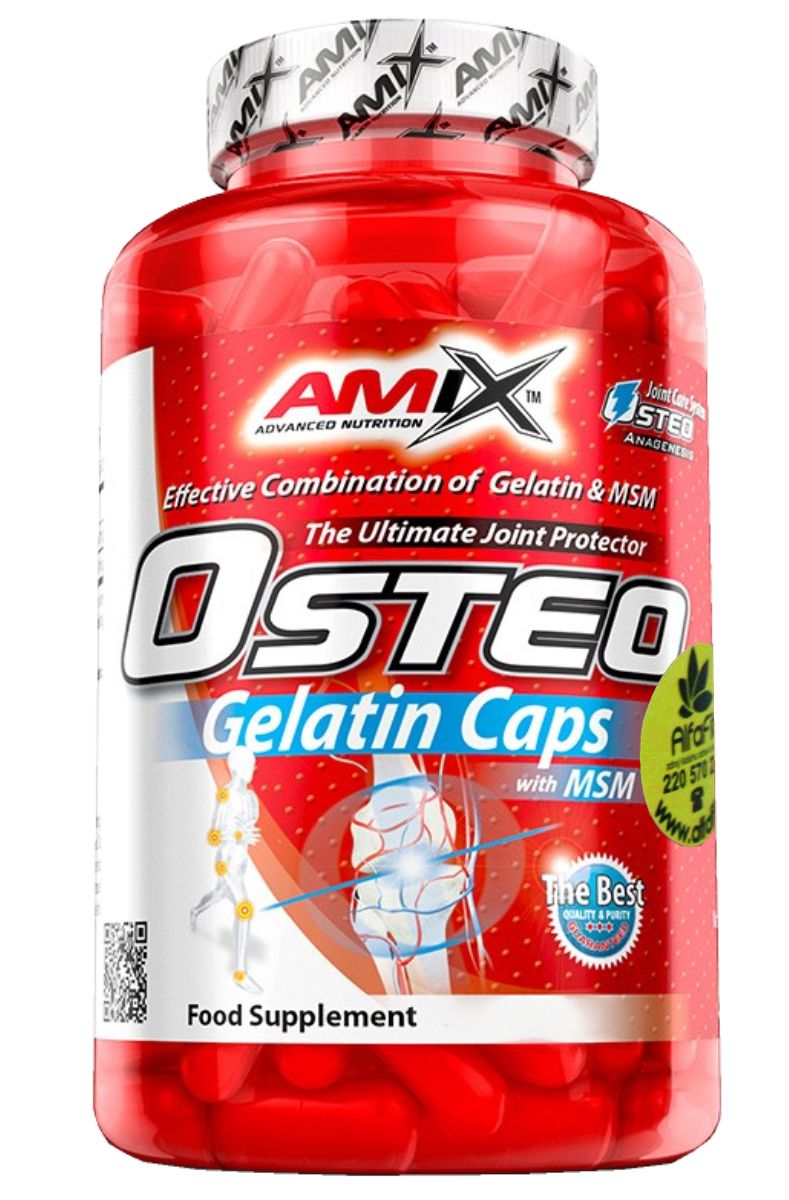
- Providing building blocks for cartilage repair
- Reducing inflammation in affected joints
- Improving joint lubrication
While these potential benefits are promising, it’s important to note that gelatin should not be considered a cure for osteoarthritis. It may serve as a complementary approach alongside conventional treatments prescribed by healthcare professionals.
Gelatin’s Potential Role in Bone Health
Beyond joint health, gelatin has also been studied for its potential benefits to bone health. The protein and amino acid content of gelatin may contribute to improved bone density and strength.
How could gelatin support bone health?
- Providing amino acids necessary for bone collagen synthesis
- Enhancing calcium absorption in the digestive tract
- Supporting the activity of bone-forming cells (osteoblasts)
A study published in the journal “Bone” found that gelatin supplementation, when combined with calcium and vitamin D, led to increased bone mineral density in postmenopausal women. However, as with joint health, more research is needed to fully understand gelatin’s effects on bone health.
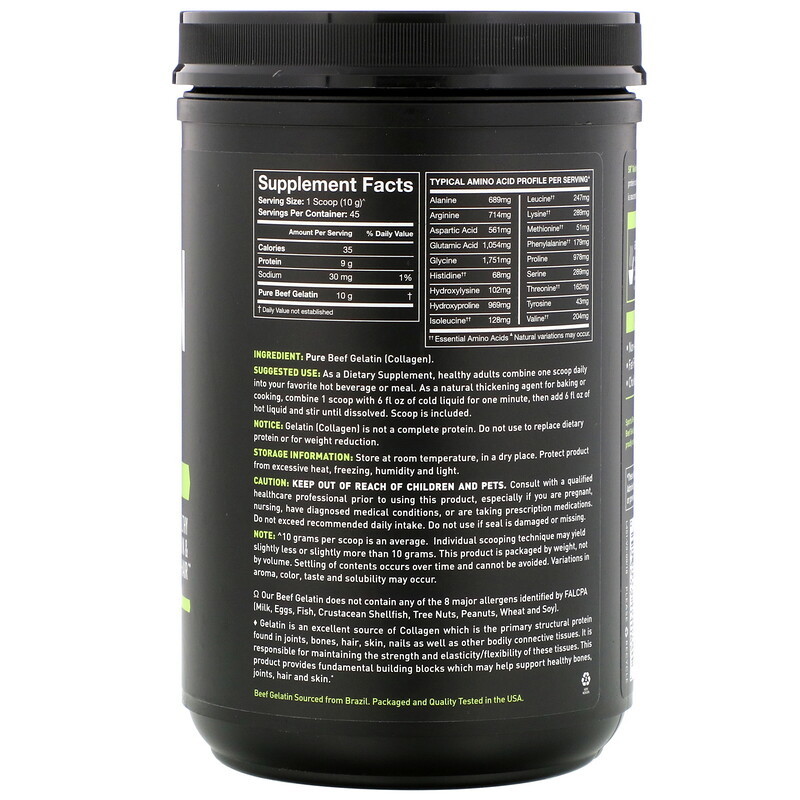
Safety Considerations and Potential Side Effects of Gelatin
While gelatin is generally recognized as safe (GRAS) by the FDA when consumed in foods, high-dose supplementation may carry some risks. It’s important to be aware of potential side effects and safety considerations.
What are some possible side effects of gelatin consumption?
- Digestive discomfort: Bloating, gas, or stomach upset
- Allergic reactions: Particularly in individuals with known allergies to gelatin or its source animals
- Increased risk of bleeding: Due to gelatin’s potential blood-thinning effects
Who should exercise caution when considering gelatin supplements?
- Pregnant or breastfeeding women: Due to limited safety data
- Individuals with kidney or liver disease: High protein intake may strain these organs
- Those with a history of kidney stones: Gelatin may increase the risk of stone formation
- People taking certain medications: Gelatin may interact with blood thinners or other drugs
As with any supplement, it’s crucial to consult with a healthcare provider before starting gelatin supplementation, especially if you have pre-existing health conditions or are taking medications.

Gelatin Supplements: Forms, Dosage, and Considerations
Gelatin supplements are available in various forms, each with its own considerations for use and effectiveness. Understanding these options can help individuals make informed decisions about supplementation.
What are the common forms of gelatin supplements?
- Powders: Easily mixed into liquids or foods
- Capsules: Convenient for precise dosing
- Gummies: Palatable option, often combined with other nutrients
- Liquid formulations: Rapid absorption, but may have a shorter shelf life
Is there a standard dosage for gelatin supplements? Currently, there is no universally agreed-upon dosage for gelatin supplementation. Recommendations can vary based on the specific product and intended use. Generally, doses range from 5 to 10 grams per day for joint health purposes.
When choosing a gelatin supplement, consider the following factors:
- Source of gelatin (bovine, porcine, or marine)
- Purity and quality of the product
- Presence of additional ingredients or fillers
- Third-party testing for contaminants
- Compatibility with dietary restrictions (e.g., kosher or halal certifications)
It’s important to follow the manufacturer’s instructions and consult with a healthcare provider to determine the most appropriate dosage and form for your individual needs.

Alternatives to Gelatin for Joint and Bone Health
While gelatin shows promise for supporting joint and bone health, it’s not the only option available. Several alternatives may offer similar benefits, particularly for those who prefer plant-based options or have concerns about gelatin consumption.
What are some alternatives to gelatin for joint and bone health?
- Collagen peptides: Derived from animal sources but more easily absorbed
- Glucosamine and chondroitin: Popular supplements for joint health
- Omega-3 fatty acids: Known for their anti-inflammatory properties
- Vitamin C: Essential for collagen synthesis
- Plant-based proteins: Such as soy or pea protein, which contain beneficial amino acids
Each of these alternatives has its own set of potential benefits and considerations. For example, collagen peptides may be more bioavailable than gelatin, while plant-based options are suitable for vegetarians and vegans.
Comparing Gelatin to Other Joint Health Supplements
How does gelatin stack up against other popular joint health supplements? Let’s compare some key factors:
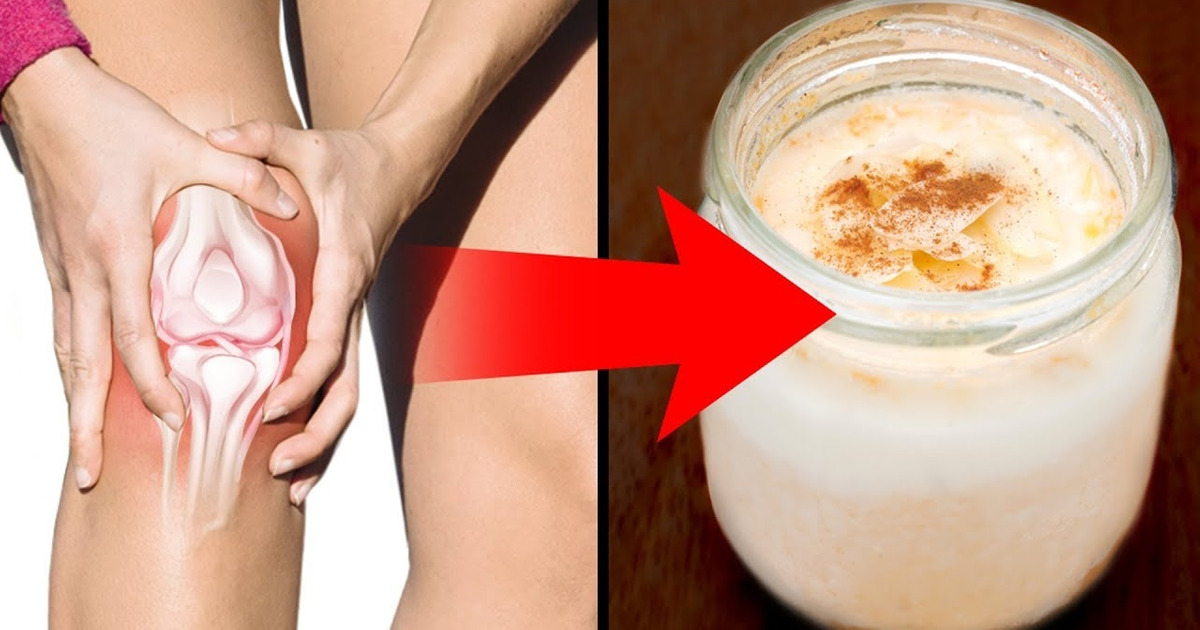
| Supplement | Source | Key Benefits | Considerations |
|---|---|---|---|
| Gelatin | Animal-derived | Collagen support, amino acid content | Potential allergies, ethical concerns |
| Glucosamine | Shell-fish or synthetic | Cartilage support, anti-inflammatory | May interact with blood thinners |
| Chondroitin | Animal-derived or synthetic | Cartilage support, shock absorption | Slower to show effects |
| Collagen peptides | Animal-derived | Higher bioavailability, skin benefits | More expensive than gelatin |
When choosing a supplement for joint or bone health, consider factors such as your dietary preferences, any existing health conditions, and potential interactions with medications. Always consult with a healthcare provider to determine the most appropriate option for your individual needs.
The Future of Gelatin Research and Applications
As our understanding of gelatin’s properties and potential health benefits continues to grow, researchers are exploring new applications and innovative uses for this versatile protein.
What are some emerging areas of gelatin research?

- Tissue engineering: Using gelatin-based scaffolds for regenerative medicine
- Drug delivery systems: Developing gelatin-based nanoparticles for targeted drug delivery
- Wound healing: Exploring gelatin’s potential in advanced wound dressings
- 3D printing: Utilizing gelatin as a bioink for printing tissue-like structures
- Functional foods: Incorporating gelatin into novel food products for health benefits
These emerging applications highlight the ongoing relevance of gelatin in various scientific and medical fields. As research progresses, we may see new and innovative uses for gelatin that extend far beyond its traditional applications.
Challenges and Opportunities in Gelatin Research
Despite its long history of use, there are still many unanswered questions and challenges in gelatin research. Some key areas of focus include:
- Improving the sustainability of gelatin production
- Developing plant-based alternatives with similar functional properties
- Enhancing the bioavailability and efficacy of gelatin-based supplements
- Investigating the long-term effects of gelatin supplementation on joint and bone health
- Exploring potential synergistic effects with other nutrients or compounds
As researchers address these challenges, we may see significant advancements in our understanding and utilization of gelatin for health and industrial applications.

In conclusion, gelatin remains a fascinating and versatile substance with a wide range of applications. While its potential benefits for joint and bone health are promising, more research is needed to fully understand its effects and optimal use. As with any supplement or dietary change, it’s essential to approach gelatin consumption with an informed perspective and in consultation with healthcare professionals.
Gelatin: Uses and Risks
Gelatin is a protein made from the skins and bones of pigs and cows. It’s a common ingredient in a number of products, including:
Why do people take gelatin?
Many people with arthritis take gelatin supplements. Gelatin contains collagen. That’s a material in the cartilage that cushions the bones in your joints.
The idea behind this usage is that eating gelatin (with collagen) will add collagen to your joints. However, that’s probably not true. The collagen in gelatin gets broken down when you eat it. It wouldn’t travel directly to your joints.
Nonetheless, there is some evidence that gelatin could help ease joint pain in people with osteoarthritis.
In animal studies, gelatin supplements also reduced swelling caused by rheumatoid arthritis. However, we need more research to know if gelatin is effective in either of these cases.
There’s no standard dose for gelatin. Ask your health care provider for advice.
Can you get gelatin naturally from foods?
Gelatin is a common ingredient in foods and medications.
What are the risks?
Side effects. Gelatin supplements can cause side effects such as:
Some people have allergic reactions to gelatin.
Risks. When eaten in foods, gelatin is considered safe by the FDA. We don’t know how safe it is to take high doses of gelatin supplements.
Some experts worry that gelatin has a risk of being contaminated with certain animal diseases. So far there have been no reported cases of people getting sick in this way.
We also don’t know if gelatin supplements are safe in children and women who are pregnant or breastfeeding.
Interactions. If you take any medicines regularly, talk to your doctor before you start using gelatin supplements.
In general, you should tell your doctor about any supplements you’re taking, even if they’re natural. That way, your doctor can check on any potential side effects or interactions with medications.
The U.S. Food and Drug Administration (FDA) does regulate dietary supplements; however, it treats them differently from foods and drugs.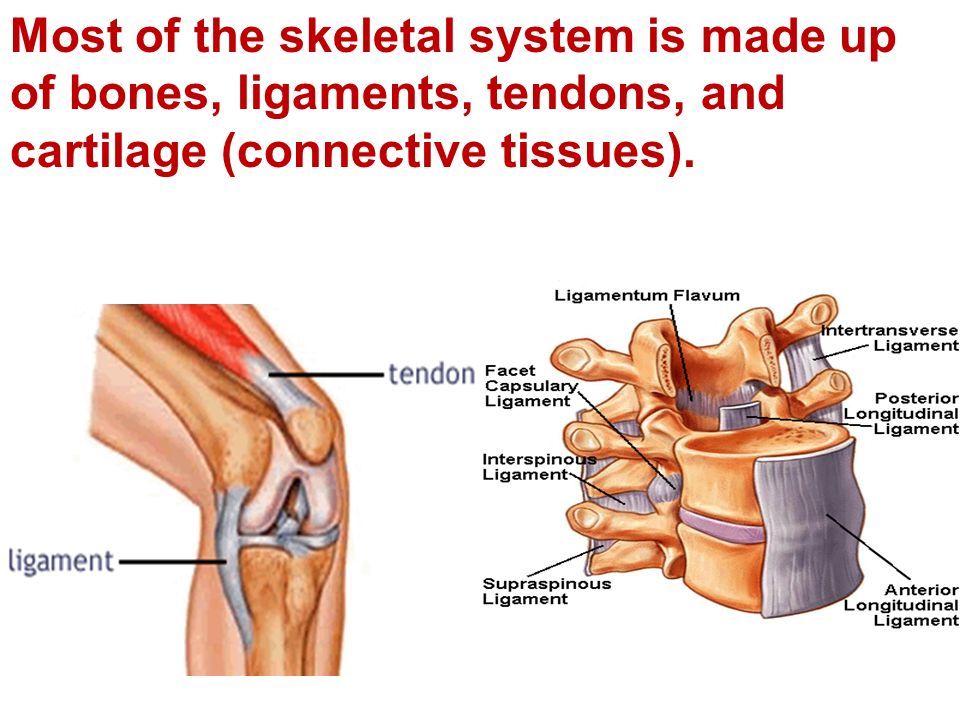 The manufacturer is responsible to assure the safety and correct labeling of their products.it treats them differently from foods and drugs. The manufacturer is responsible to assure the safety and correct labeling of their products.
The manufacturer is responsible to assure the safety and correct labeling of their products.it treats them differently from foods and drugs. The manufacturer is responsible to assure the safety and correct labeling of their products.
Overview, Uses, Side Effects, Precautions, Interactions, Dosing and Reviews
Morganti P, Randazzo S Bruno C. Effect of gelatin/cystine diet on human hair growth. J Soc Cosmetic Chem (England) 1982;33:95-96.
Morganti, P and Fanrizi, G. Effects of gelatin-glycine on oxidative stress. Cosmetics and Toiletries (USA) 2000;115:47-56.
No authors listed. A randomized trial comparing the effect of prophylactic intravenous fresh frozen plasma, gelatin or glucose on early mortality and morbidity in preterm babies. The Northern Neonatal Nursing Initiative [NNNI] Trial Group. Eur J Pediatr. 1996;155(7):580-588. View abstract.
Unknown author. Clinical trial finds Knox NutraJoint has benefits in mild osteoarthritis. 10-1-2000.
Brown KE, Leong K, Huang CH, et al. Gelatin/chondroitin 6-sulfate microspheres for the delivery of therapeutic proteins to the joint. Arthritis Rheum 1998;41:2185-95. View abstract.
Gelatin/chondroitin 6-sulfate microspheres for the delivery of therapeutic proteins to the joint. Arthritis Rheum 1998;41:2185-95. View abstract.
de la Fuente Tornero E, Vega Castro A, de Sierra Hernández PÁ, et al. Kounis syndrome during anesthesia: Presentation of indolent systemic mastocytosis: A case report. A Case Rep. 2017;8(9):226-228. View abstract.
Djagny VB, Wang Z, Xu S. Gelatin: a valuable protein for food and pharmaceutical industries: review. Crit Rev Food Sci Nutr 2001;41(6):481-92. View abstract.
Electronic Code of Federal Regulations. Title 21. Part 182 — Substances Generally Recognized As Safe. Available at: https://www.accessdata.fda.gov/scripts/cdrh/cfdocs/cfcfr/CFRSearch.cfm?CFRPart=182
Florez ID, Sierra JM, Niño-Serna LF. Gelatin tannate for acute diarrhoea and gastroenteritis in children: a systematic review and meta-analysis. Arch Dis Child. 2020;105(2):141-6. View abstract.
Gelatin Manufacturers Institute of America. Gelatin Handbook.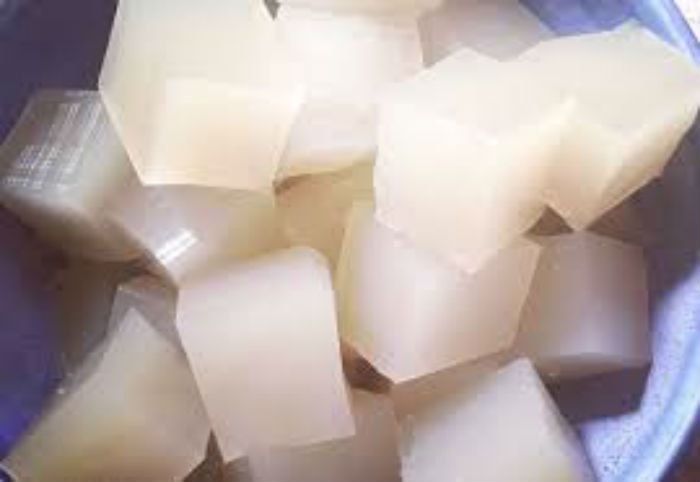 2012. Available at: https://www.gelatin-gmia.com/gelatinhandbook.html. Accessed September 9, 2016.
2012. Available at: https://www.gelatin-gmia.com/gelatinhandbook.html. Accessed September 9, 2016.
Kakimoto K, Kojima Y, Ishii K, et al. The suppressive effect of gelatin-conjugated superoxide dismutase on disease development and severity of collagen-induced arthritis in mice. Clin Exp Immunol 1993;94:241-6. View abstract.
Kelso JM. The gelatin story. J Allergy Clin Immunol 1999;103:200-2. View abstract.
Lewis CJ. Letter to reiterate certain public health and safety concerns to firms manufacturing or importing dietary supplements that contain specific bovine tissues. FDA. Available at: www.cfsan.fda.gov/~dms/dspltr05.html.
Li Y, He H, Yang L, Li X, Li D, Luo S. Therapeutic effect of Colla corii asini on improving anemia and hemoglobin compositions in pregnant women with thalassemia. Int J Hematol. 2016;104(5):559-565. View abstract.
Lis DM, Baar K. Effects of Different Vitamin C-Enriched Collagen Derivatives on Collagen Synthesis. Int J Sport Nutr Exerc Metab.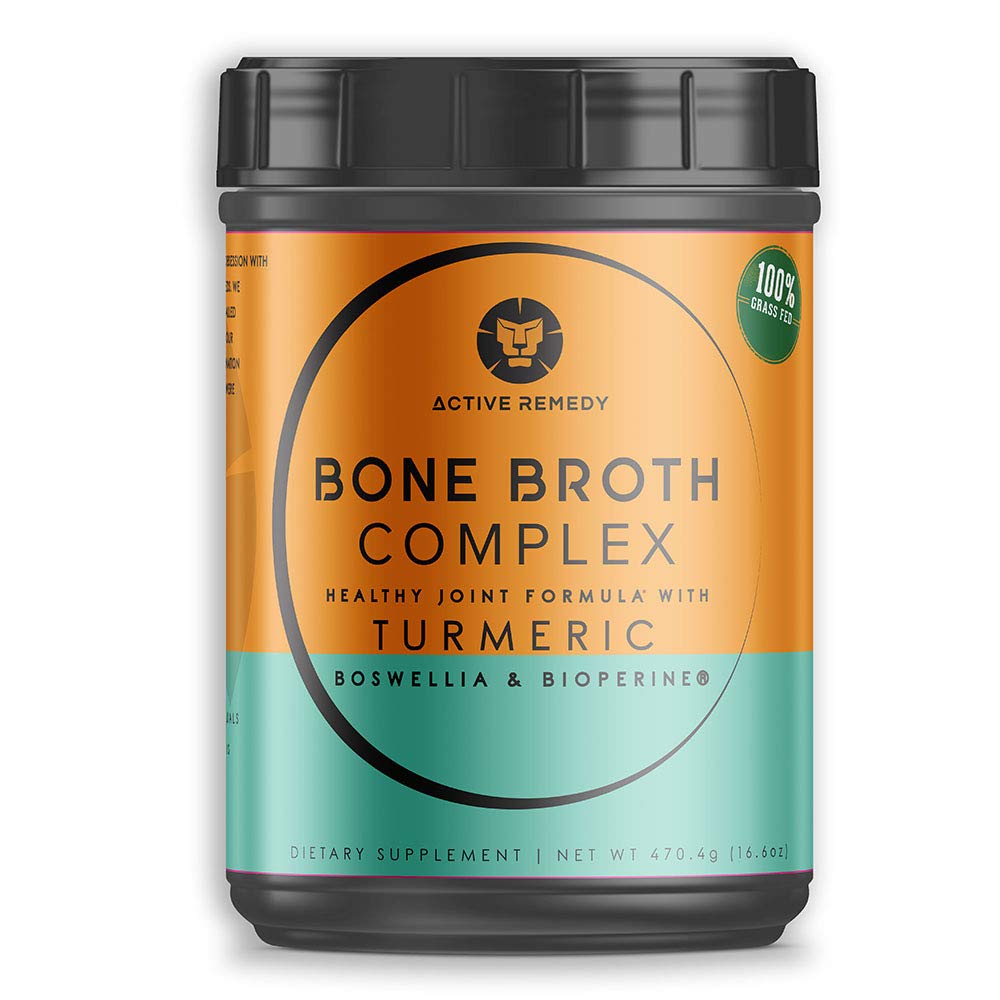 2019;29(5):526-531. View abstract.
2019;29(5):526-531. View abstract.
Moskowitz RW. Role of collagen hydrolysate in bone and joint disease.Semin Arthritis Rheum 2000;30:87-99. View abstract.
Nakayama T, Aizawa C, Kuno-Sakai H. A clinical analysis of gelatin allergy and determination of its causal relationship to the previous administration of gelatin-containing acellular pertussis vaccine combined with diphtheria and tetanus toxoids. J Allergy Clin Immunol 1999;103:321-5.
Oesser S, Seifert J. Stimulation of type II collagen biosynthesis and secretion in bovine chondrocytes cultured with degraded collagen. Cell Tissue Res 2003;311:393-9.. View abstract.
PDR Electronic Library. Montvale, NJ: Medical Economics Company, Inc., 2001.
Sakaguchi M, Inouye S. Anaphylaxis to gelatin-containing rectal suppositories. J Allergy Clin Immunol 2001;108:1033-4. View abstract.
Schwick HG, Heide K. Immunochemistry and immunology of collagen and gelatin. Bibl Haematol 1969;33:111-25. View abstract.
Su K, Wang C. Recent advances in the use of gelatin in biomedical research. Biotechnol Lett 2015;37(11):2139-45. View abstract.
Ventura Spagnolo E, Calapai G, Minciullo PL, Mannucci C, Asmundo A, Gangemi S. Lethal anaphylactic reaction to intravenous gelatin in the course of surgery. Am J Ther. 2016;23(6):e1344-e1346. View abstract.
Uses, Side Effects, Dose, Health Benefits, Precautions & Warnings
Fletcher, A. G., Hardy, J. D., Riegel, C., and Koop, C. E. GELATIN AS A PLASMA SUBSTITUTE: THE EFFECTS OF INTRAVENOUS INFUSION OF GELATIN ON CARDIAC OUTPUT AND OTHER ASPECTS OF THE CIRCULATION OF NORMAL PERSONS, OF CHRONICALLY ILL PATIENTS, AND OF NORMAL VOLUNTEERS SUBJECTED TO LARGE HEMORRHAGE. J Clin.Invest 1945;24(4):405-415. View abstract.
Kawahara H, Tanaka K Iikura Y Akasawa A Saito H. The incidence of gelatin allergy among atopic children in Japan. J Allergy Clin.Immunol. 1998;103:321-325.
McWilliams, M. Foods- Experimental Perspectives (4th ed). Englewood Cliffs, NJ: Prentice Hall;2001.
Foods- Experimental Perspectives (4th ed). Englewood Cliffs, NJ: Prentice Hall;2001.
Miller, L. G. Observations on the distribution and ecology of Clostridium botulinum type E in Alaska. Canadian Journal of Microbiology 1982;21(920):926.
Morganti P, Randazzo S Bruno C. Effect of gelatin/cystine diet on human hair growth. J Soc Cosmetic Chem (England) 1982;33:95-96.
Morganti, P and Fanrizi, G. Effects of gelatin-glycine on oxidative stress. Cosmetics and Toiletries (USA) 2000;115:47-56.
Nakayama, T., Aizawa, C., and Kuno-Sakai, H. A clinical analysis of gelatin allergy and determination of its causal relationship to the previous administration of gelatin-containing acellular pertussis vaccine combined with diphtheria and tetanus toxoids. J Allergy Clin.Immunol. 1999;103(2 Pt 1):321-325. View abstract.
No authors listed. A randomized trial comparing the effect of prophylactic intravenous fresh frozen plasma, gelatin or glucose on early mortality and morbidity in preterm babies.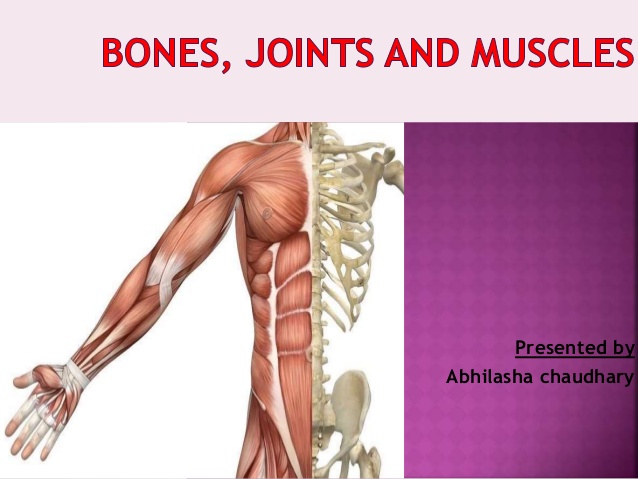 The Northern Neonatal Nursing Initiative [NNNI] Trial Group. Eur J Pediatr. 1996;155(7):580-588. View abstract.
The Northern Neonatal Nursing Initiative [NNNI] Trial Group. Eur J Pediatr. 1996;155(7):580-588. View abstract.
Reimer, L. G. and Reller, L. B. Effect of sodium polyanetholesulfonate and gelatin on the recovery of Gardnerella vaginalis from blood culture media. J Clin.Microbiol. 1985;21(5):686-688. View abstract.
Sakaguchi, M. and Inouye, S. Two patterns of systemic immediate-type reactions to Japanese encephalitis vaccines. Vaccine 1998;16(1):68-69. View abstract.
Stratton, C. W., Weinstein, M. P., Mirrett, S., Paisley, J., Lauer, B. A., and Reller, L. B. Controlled evaluation of blood culture medium containing gelatin and V-factor-analog for detection of septicemia in children. J Clin.Microbiol. 1988;26(4):747-749. View abstract.
Unknown author. Clinical trial finds Knox NutraJoint has benefits in mild osteoarthritis. 10-1-2000.
van Eerd, J. E., Vegt, E., Wetzels, J. F., Russel, F. G., Masereeuw, R., Corstens, F. H., Oyen, W. J., and Boerman, O. C. Gelatin-based plasma expander effectively reduces renal uptake of 111In-octreotide in mice and rats.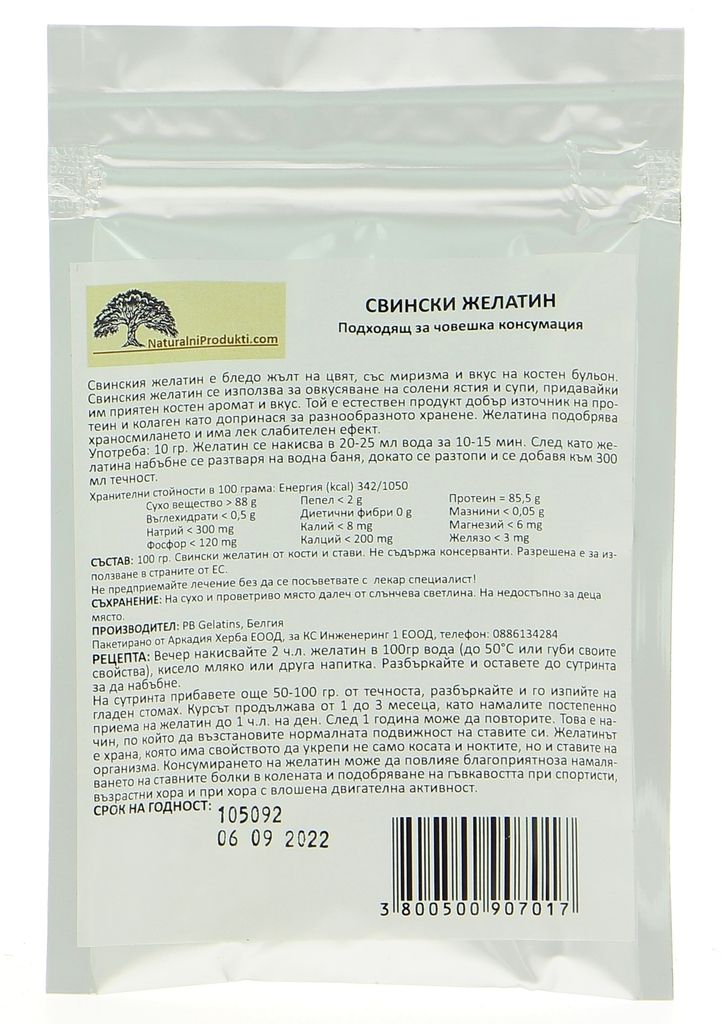 J Nucl.Med. 2006;47(3):528-533. View abstract.
J Nucl.Med. 2006;47(3):528-533. View abstract.
Vine, R. E. Harkness T. Browning and C. Wagner. Winemaking from Grape Growing to Market Place. Gaithersburg: Aspen;1999.
Brown KE, Leong K, Huang CH, et al. Gelatin/chondroitin 6-sulfate microspheres for the delivery of therapeutic proteins to the joint. Arthritis Rheum 1998;41:2185-95. View abstract.
Electronic Code of Federal Regulations. Title 21. Part 182 — Substances Generally Recognized As Safe. Available at: https://www.accessdata.fda.gov/scripts/cdrh/cfdocs/cfcfr/CFRSearch.cfm?CFRPart=182
Kakimoto K, Kojima Y, Ishii K, et al. The suppressive effect of gelatin-conjugated superoxide dismutase on disease development and severity of collagen-induced arthritis in mice. Clin Exp Immunol 1993;94:241-6. View abstract.
Kelso JM. The gelatin story. J Allergy Clin Immunol 1999;103:200-2. View abstract.
Lewis CJ. Letter to reiterate certain public health and safety concerns to firms manufacturing or importing dietary supplements that contain specific bovine tissues. FDA. Available at: www.cfsan.fda.gov/~dms/dspltr05.html.
FDA. Available at: www.cfsan.fda.gov/~dms/dspltr05.html.
Moskowitz RW. Role of collagen hydrolysate in bone and joint disease.Semin Arthritis Rheum 2000;30:87-99. View abstract.
Nakayama T, Aizawa C, Kuno-Sakai H. A clinical analysis of gelatin allergy and determination of its causal relationship to the previous administration of gelatin-containing acellular pertussis vaccine combined with diphtheria and tetanus toxoids. J Allergy Clin Immunol 1999;103:321-5.
Oesser S, Seifert J. Stimulation of type II collagen biosynthesis and secretion in bovine chondrocytes cultured with degraded collagen. Cell Tissue Res 2003;311:393-9.. View abstract.
PDR Electronic Library. Montvale, NJ: Medical Economics Company, Inc., 2001.
Sakaguchi M, Inouye S. Anaphylaxis to gelatin-containing rectal suppositories. J Allergy Clin Immunol 2001;108:1033-4. View abstract.
Schwick HG, Heide K. Immunochemistry and immunology of collagen and gelatin. Bibl Haematol 1969;33:111-25. View abstract.
View abstract.
Good for your joints? — ScienceDaily
A new study from Keith Baar’s Functional Molecular Biology Laboratory at the UC Davis College of Biological Sciences and the Australian Institute of Sport suggests that consuming a gelatin supplement, plus a burst of intensive exercise, can help build ligaments, tendons and bones. The study is published in the January issue of the American Journal of Clinical Nutrition.
Connective tissue and bone injuries are common in both athletes and the elderly, and interfere with peoples’ ability (and enthusiasm) for exercise, whether they are an elite athlete or just trying to lose weight and maintain fitness and flexibility. Steps that can prevent injury and enhance recovery are therefore of great interest.
Obviously, it’s difficult to assess the direct effect of a supplement on tissues without opening up someone’s knee. But Baar’s laboratory has been developing techniques to grow artificial ligaments in the laboratory. They used their lab-dish ligaments as a stand-in for the real thing.
They used their lab-dish ligaments as a stand-in for the real thing.
Gelatin, Vitamin C and Exercise
Baar, Greg Shaw at the Australian Institute of Sport, and colleagues enrolled eight health young men in a trial of a gelatin supplement enhanced with vitamin C. The volunteers drank the supplement and had blood taken, and after one hour performed a short (five minute) bout of high-impact exercise (skipping).
The researchers tested the blood for amino acids that could build up the collagen protein that composes tendons, ligaments, and bones. They also tested blood samples for their effect on Baar’s lab-grown ligaments at UC Davis.
The gelatin supplement increased blood levels of amino acids and markers linked to collagen synthesis, and improved the mechanics of the engineered lab-grown ligaments, they found.
“These data suggest that adding gelatin and vitamin C to an intermittent exercise program could play a beneficial role in injury prevention and tissue repair,” the researchers wrote.
Story Source:
Materials provided by University of California – Davis. Note: Content may be edited for style and length.
Health benefits of eating gelatin daily (a 3 month challenge)
I have always had a good amount of gelatin in my diet. I like it in your typical Jello form but also in my favorite candies, other desserts and even soups. It wasn’t till I looked at my diet closer that I found exactly how much gelatin I usually consume, and how often.
I had seen a mention on an Instagram photo about the benefits of eating gelatin. The photo claimed it was a diet food and was good for hair, skin, nails and joints. I decided to research it.
I found so many amazing benefits that I decided to give myself a challenge. I decided that I would eat gelatin in some form every single day for 3 months and then assess my results.
I was pretty impressed after 3 months, but my 5th month just finished and I am absolutely in love with the results!
What is gelatin?
Gelatin or gelatine (from Latin: gelatus meaning “stiff”, “frozen”) is a translucent, colorless, brittle (when dry), flavorless foodstuff, derived from collagen obtained from various animal by-products. It is commonly used as a gelling agent in food, pharmaceuticals, photography, and cosmetic manufacturing.
It is commonly used as a gelling agent in food, pharmaceuticals, photography, and cosmetic manufacturing.
Gelatin is an irreversibly hydrolyzed form of collagen. (source: Wikipedia) According to WebMD:
Gelatin is used for weight loss and for treating osteoarthritis, rheumatoid arthritis, and brittle bones (osteoporosis). Some people also use it for strengthening bones, joints, and fingernails. Gelatin is also used for improving hair quality and to shorten recovery after exercise and sports-related injury.
“My” main reasons for consuming gelatin daily for this challenge are as follows:
Digestion:
Gelatin absorbs water so it keeps things moving through the gut and helps with digestion and constipation. It also reduces inflammation and helps repair the intestinal lining. Gelatin can also help with leaky gut.
Healthy joints:
You read that part about gelatin being derived from collagen, right? We know joints need collagen to be healthy and this is a great source of it! Athletes have used gelatin for joint pain relief and as an anti-inflammatory.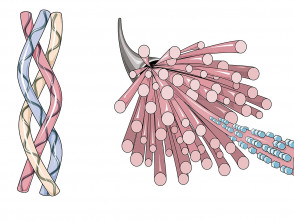
Skin & Hair:
Speaking of collagen….those anti aging creams they sell aren’t as effective as a daily serving of gelatin, and it’s cheaper. Gelatin also contains keratin which is essential for healthy nails, hair, teeth and skin.
Sleep:
Gelatin contains glycine and consuming it before bed helps induce sleep. That’s not to say that eating it during the day will make you tired, but the glycine in gelatin can help you to sleep better at night.
Nutrition:
Gelatin contains 6 grams of protein per tablespoon, 1/2 of your essential amino acids and Glycine, which helps your liver release toxins.
Now this is by no means a complete list on benefits. I’d be writing for the next 2 days if I compiled one of those! That is the list of why I decided to challenge myself to eat more gelatin. Now for my results:
* My nails are longer and stronger. Finally!
* My joints quit hurting all the time and when they do bother me, it seems to be a much shorter episode.
* My hair is growing in much healthier, even with dying it last week.
* My skin looks a bit less dry and aged & I’ve been sleeping much better.
* My digestion issues have cleared up a lot and it continues to improve.
* I lost a few pounds. I didn’t really expect it and wasn’t trying, but there it went!
I’m very happy with these results!
How to Add Gelatin to your Diet
How did I do it? I bought plain gelatin and mixed it with Jello every 4 days. I have an extreme sweet tooth so this worked great for me. Especially for those after dinner cravings! You could eat gelatin plain without the flavored stuff mixed in, but it’s not that great tasting.
I used 1 large ‘table’ spoon full of unflavored gelatin. (not a Tbsp. measuring spoon, a silver dinner spoon) I added 1 1/2 – 2 cups boiling water and stirred gently till absorbed. Then I add 1 packet sugar free Jello style dessert mix. Mix thoroughly then chill and cut into squares.
I ate 1/4 of this mixture each day consuming most of it after dinner. That’s 1/2 cup a day, less if you only used 1.5 cups of water. Yes, I used commercial flavored, chemical crap. Yes…it was good! 😂 I did find that Walmart brand ‘Jello’ is the cheapest and it tastes the same.
That’s 1/2 cup a day, less if you only used 1.5 cups of water. Yes, I used commercial flavored, chemical crap. Yes…it was good! 😂 I did find that Walmart brand ‘Jello’ is the cheapest and it tastes the same.
Different ways to eat gelatin
I also experimented with adding my own juices and flavorings but have yet to settle on a fail-proof recipe, so I’ll work on that! I did find a strawberry jello cup recipe from Attainable Sustainable that is A-Mazing though…so check that out in the meantime.
I also made homemade marshmallows a few times. They were so good and even the kids loved them. I’ll post that recipe soon.
Also, a few days a month I make a bone broth which is rich in gelatin. Bone broth is awesome because you can eat it alone or use it to flavor rice, vegetable dishes or as a soup/stew base. It’s easy to set & forget in the crock pot, so very little work. It can also be canned so a big batch can last a long time!
Here is an excellent post on using a turkey to make Bone Broth by Back To Our Roots.
I started by buying bulk gelatin from the Amish store by me, however I have found a grass fed beef gelatin that I really like. This one by Great Lakes is very similar to Knox or the stuff I bought. (the first gelatin I bought tended to smell a little like wet dog when I mixed it up, the Great Lakes was much better in that department!)
Speaking of which you could buy Knox at your local store, but it’s much more expensive than a bulk version.
Gelatin VS Collagen
You may have heard about collagen peptides being used for their health benefits. Gelatin is actually a degraded form of collagen, so they are slightly different but have almost all of the same benefits.
I originally wrote this article in 2015, and the collagen craze was not what it is now, so information and products weren’t as widely available as now. I have since started using gelatin and collagen interchangeably and have continued getting many of the same results.
The lone sticking point for me has been weight loss, as the sugar free Jell-O style dessert actually helped me with cravings for sweets. Any time you reduce your daily calories it can have an effect on your weight. Collagen peptides are tasteless, therefore they do not help with sugar cravings.
Any time you reduce your daily calories it can have an effect on your weight. Collagen peptides are tasteless, therefore they do not help with sugar cravings.
Collagen can be mixed into cold liquids which makes it more versatile than gelatin for drinks. The main difference is their thickening properties, which collagen does not have at all. Collagen also comes in capsule or pill form if you prefer that.
Great Lakes brand also has collagen that’s water soluble. That one is great for smoothies and adding to other drinks and recipes. As mentioned it doesn’t gel or thicken the same so it’s practically unnoticeable once mixed in, which makes it very easy to drink every day. I find collagen more portable, but gelatin more practical for daily use, since it can also be a dessert.
I have a lot more experimenting that I want to do with recipes and different ways to add gelatin to my diet. These last few months have convinced me that adding gelatin to my diet daily has made a huge improvement and now I’m just searching for ways to simplify it for the long run!
Since writing this post I have found so many great resources for information on why and how to add gelatin to your daily diet including Martha Stewart’s recipe for homemade marshmallows.
Many other common foods have health benefits too! Check out these articles: The many health benefits of ginger,
there are 13 reasons why parsley might be the healthiest thing in your kitchen, and did you know that there are 12 Reasons why you should brew up some catnip tea? Try it!
~L
Want gardening and healthy living information sent right to your email weekly? Click right here to join my list and get new posts sent directly to you the day they’re published!
I am not a doctor or other health care professional nor do I claim to be. I am not trained in any medical field. I am simply passing on information that has worked for me. This information is for entertainment purposes only and is not meant to treat or diagnose any medical condition. see a Dr if you are ill. Click for my full disclaimer.
(This post contains affiliate links. If you chose to purchase something through the link, I will get a small payment from Amazon. It will not affect your purchase price.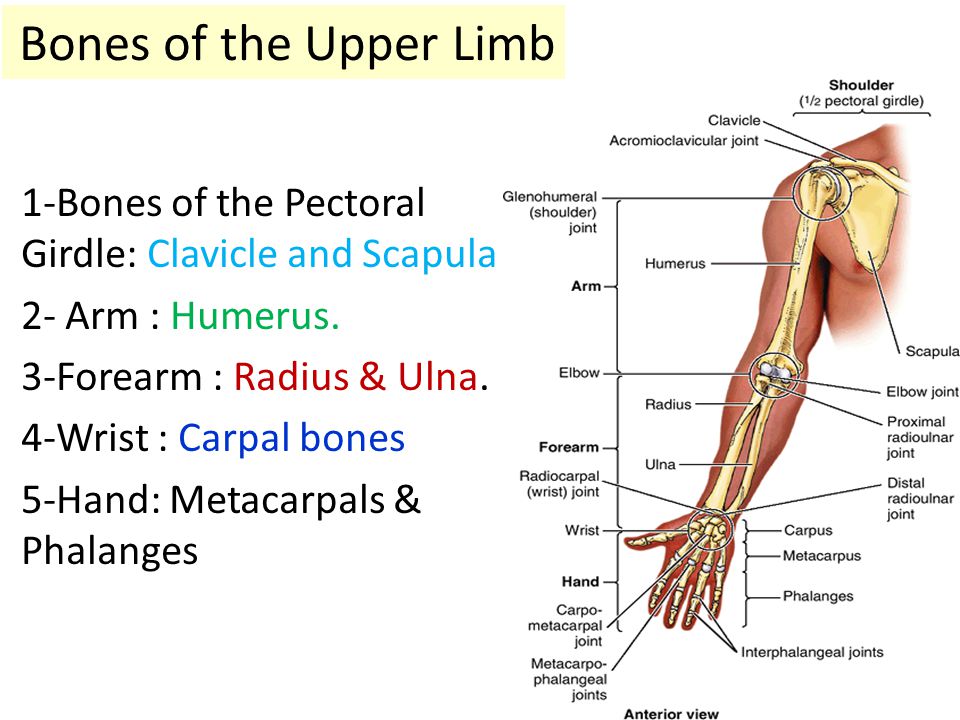 Click for full disclosure.)
Click for full disclosure.)
Is Gelatin Good for You? Plus, How to Use It
- Gelatin is so much more than a jiggly dessert. Gelatin is a potent protein that supports healthy skin, bones and joints.†
- Collagen peptides and gelatin are both animal products that have identical amino acid profiles. The difference is that gelatin sets as it cools, adding body to jellies, sauces, gummies and more.
- Bulletproof Collagelatin is gelatin plus hydrolyzed collagen protein from pasture-raised cows. Use it anytime you would normally use gelatin. Keep reading for delicious recipes!
The gelatin of your childhood probably starred in jellies, marshmallows and gummy candies. Turns out, gelatin benefits your body beyond just your tastebuds: It’s a potent protein that supports healthy skin, bones and joints, plus strong nails and hair.†
That’s because gelatin provides your body with the amino acids that people don’t get from other sources. Unless you eat plenty of animal parts, bone broth and organ meats, you’ll probably benefit from an extra boost of gelatin powder.
Unless you eat plenty of animal parts, bone broth and organ meats, you’ll probably benefit from an extra boost of gelatin powder.
But what is gelatin made of, and is gelatin good for you? Read on to explore the health benefits of gelatin, plus a few of our best gelatin recipes.
What is gelatin made of?
Gelatin is made by cooking down collagen protein found in the skin, hooves, connective tissues and bones of animals. The cooking process breaks down the bonds between proteins to make smaller, more bioavailable building blocks that your body can easily absorb.
Like collagen, gelatin is packed with beneficial amino acids—especially the anti-aging superstars glycine and proline, which are lacking in the standard Western diet.
Amino acids are the building blocks of proteins. Essential amino acids must come from food; your body naturally produces other amino acids, which are considered conditionally essential. These amino acids make gelatin especially powerful for supporting plump and hydrated skin, joint mobility and bone repair.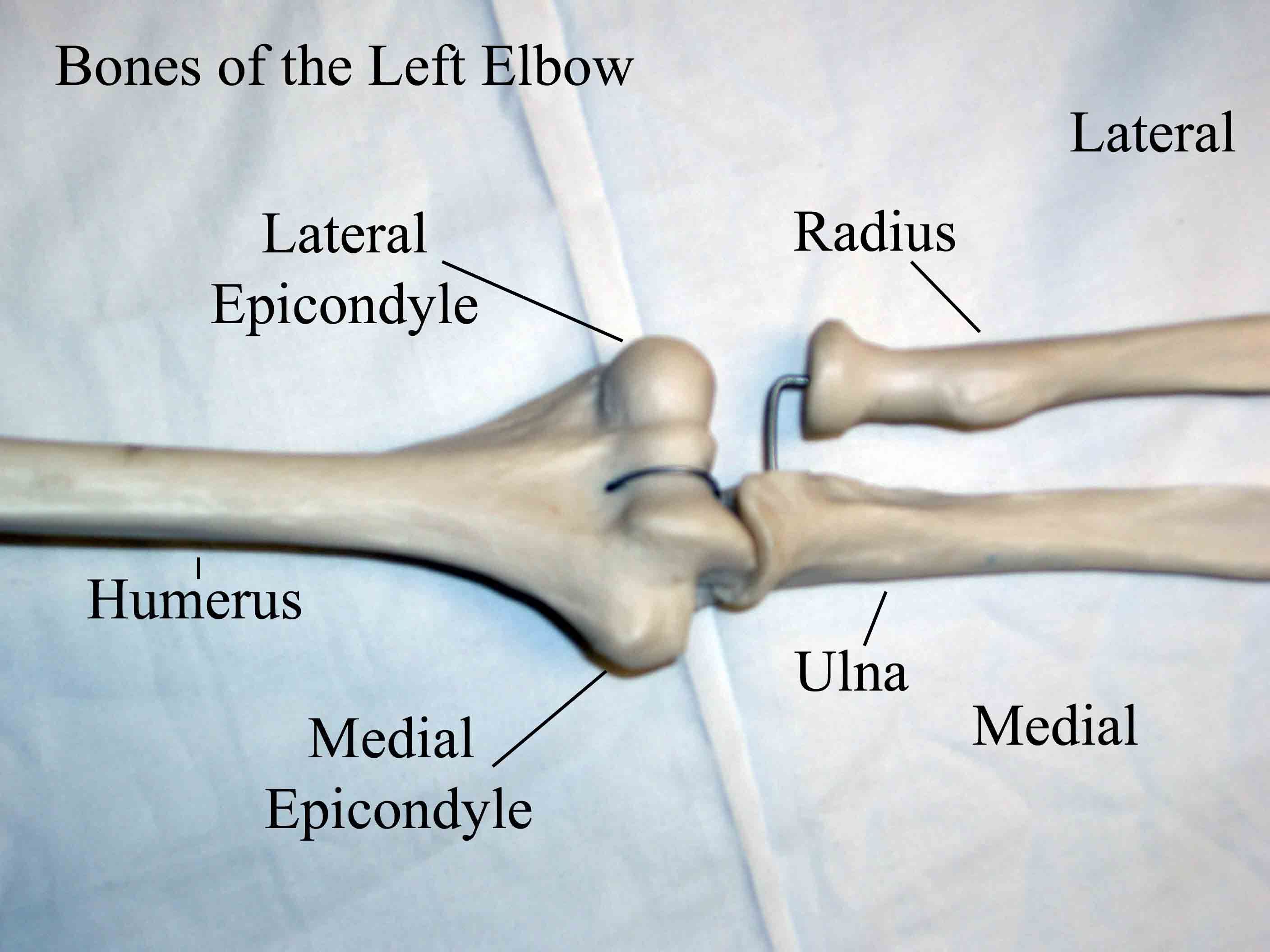 †
†
The same elastic properties that make collagen so beneficial to our skin and connective tissue also make it handy as a gelling agent in food. Gelatin has the unique ability to cause liquids to gel, giving foods like jellies, gravy and jam their unique texture. This feature opens up a whole new world of culinary possibilities, from rich sauces to fluffy pies.
Related: More Than Jell-O: Gelatin Recipes for Better Gut Health
Gelatin vs. hydrolyzed collagen
Gelatin and hydrolyzed collagen (also called collagen hydrolysate or collagen peptides) are nutritionally similar. Both are made by cooking and breaking down collagen-rich foods, like bone, cartilage and hooves. This process breaks down the amino acids in collagen, making it easier to digest and absorb in your intestinal tract.
Because they come from the same sources, gelatin and hydrolyzed collagen provide the same valuable amino acids and nutrition profiles, with slightly different properties:
- The extra processing used to make hydrolyzed collagen breaks the amino acids into smaller pieces, which some people find easier to absorb
- Hydrolyzed collagen (like Bulletproof Collagen Protein) can dissolve in hot or cold water, while gelatin requires hot water
- Gelatin causes liquid to gel when it cools.
 That’s how gelatin adds thickness to sauces, jellies or even ice cream
That’s how gelatin adds thickness to sauces, jellies or even ice cream
Bulletproof Collagelatin is a blend of beef gelatin and hydrolyzed collagen from pasture-raised cows. That means you get both proteins in one versatile powder that gels when it cools.
Use Collagelatin anytime you’d reach for standard gelatin—it’s unflavored, so it’s great in anything from soups to desserts.
Is gelatin good for you?
If you’re seeking a versatile pantry staple with whole-body benefits, then gelatin is your answer. Find out why we keep Collagelatin in the kitchen at all times.
Supports glowing skin
Your daily skin care routine and gelatin go hand-in-hand. Grass-fed gelatin provides the necessary proteins to improve your skin’s moisture and elasticity, and it can even help prevent wrinkles.[1][2]
Your body especially needs the amino acid glycine, as well as proline and hydroxyproline, to build its own collagen. That matters because collagen is one of the vital elements of healthy skin. Your body tends to produce less collagen as you age, so readily providing these building blocks helps fight off wrinkles and sagging skin.
Your body tends to produce less collagen as you age, so readily providing these building blocks helps fight off wrinkles and sagging skin.
Pro tip: Pair your gelatin and collagen intake with vitamin C to support your body’s natural collagen production. Vitamin C-rich foods include strawberries, citrus and broccoli.
Related: How Do Collagen Supplements Work? What the Science Says
Supports mobility
Gelatin’s elastic properties go more than skin-deep. It also promotes healing and resilience in your connective tissues.
Studies show that hydrolyzed collagen supplementation, like gelatin, increases joint comfort and increases the density of your cartilage, making your joints more durable.[3][4][5]
Improves bone health
As we age, so do our bones. When you take steps to support bone health, you can help keep your bones and body strong—and gelatin can help you along the way.
You reach peak bone mass (the maximum strength and density of your bones) in your late teens and early 20s. Bone mass then starts to decrease, with the most changes seen in women going through menopause.[6]
Thankfully, you can support healthy bones with healthy lifestyle changes like strength training, staying at a healthy weight, eating calcium-rich foods—and taking collagen supplements such as gelatin.
Research shows that collagen supplements provide the amino acids our body needs in order to support healthy bones.[7]
How to add more gelatin to your diet
Your ancestors reaped all the benefits of gelatin and collagen by using every part of the animals they consumed. With less and less whole-animal eating in the Western diet, most people have lost this source of gelatin.
Here are two ways to incorporate gelatin in your diet:
- Up your intake of foods that include animal cartilage, bones or skin.
 That means dishes with often-overlooked cuts of meat like tripe and oxtail, as well as slow-cooked Chicken Feet Bone Broth or Cardamom Ginger Bone Marrow Broth
That means dishes with often-overlooked cuts of meat like tripe and oxtail, as well as slow-cooked Chicken Feet Bone Broth or Cardamom Ginger Bone Marrow Broth - Try gelatin supplements, which you can find in capsules or powders. Powdered gelatin is great in baking and food prep, but for the best results, go with a gelatin powder that dissolves easily like Bulletproof Collagelatin
Speaking of high quality, it counts when you’re looking at gelatin powders. Keep reading to find out why.
Gelatin powder: What to look for when buying
Because gelatin is made from cattle, chickens, fish or pigs, select your gelatin the same way you would choose your meats. While a box of Jell-O from the grocery store will still make a squishy dessert, the perks stop there.
Opt instead for grass-fed, pasture-raised gelatins to reap the gelatin benefits and avoid exposure to residues from pesticides, hormones and antibiotics.
Unfortunately for vegans and vegetarians, gelatin is only derived from animal sources. Many vegan recipes use agar agar, made from red seaweed, as a gelatin alternative. While agar agar works similarly as a gelling agent, it doesn’t have the protein and nutritional properties found in gelatin.
Many vegan recipes use agar agar, made from red seaweed, as a gelatin alternative. While agar agar works similarly as a gelling agent, it doesn’t have the protein and nutritional properties found in gelatin.
Our best gelatin recipes
Check out our full roundup of gelatin recipes here, or try one of these favorites below!
If you’re cooking with Collagelatin, use it as a 1:1 replacement for straight gelatin in your favorite recipes.
Bone Broth
A hearty broth made with the leftover bones and cartilage bits from your organic, grass-fed meats is one easy way to make your own gelatin. Bone broth packs all the benefits of gelatin and collagen, plus a cornucopia of healthy fats, trace minerals and vital nutrients. Try this recipe at home, or find an organic, grass-fed bone broth in your local health food store.
Pro tip: If your bone broth congeals slightly when you pop it in the fridge, you know you’ve got plenty of the good stuff.
No-Bean Keto Chili
Chili without beans?! Trust us, you won’t miss them. This simple recipe can be done on the stovetop or in your slow cooker.
All you need to do is brown up your meat and veggies, then combine them with the rest of the ingredients. Put the cornstarch back in your pantry because this chili is thickened with 1 to 2 tablespoons of Bulletproof Collagelatin.
The end result is a hearty chili full of healthy fats and protein that will keep you full for hours.
Keto S’Mores
Get ready to have s’mores without the high sugar and bonfire. The recipe utilizes protein-packed Collagelatin to form marshmallows and Bulletproof Grass-Fed Ghee to create the graham cracker. The end result is a nostalgic dessert that won’t send your blood sugar through the roof due to the natural sweeteners.
Keto Rocky Road Bars
Gelatin desserts go way beyond Jello-O. Keto Rocky Road Bars are another marshmallow masterpiece all thanks to the body-nourishing Collagelatin. The best part is you can personalize these bars how you want. Looking for more healthy fats and texture? Mix in raw nuts or unsweetened coconut shreds.
The best part is you can personalize these bars how you want. Looking for more healthy fats and texture? Mix in raw nuts or unsweetened coconut shreds.
Magical Frozen Fudge Pops
A popsicle high in quality fats and low in sugar does exist when you combine together nutritious ingredients such as Collagelatin, egg yolks, Bulletproof Brain Octane C8 MCT Oil and coconut cream. All you need are popsicle molds and you have a frozen treat that pairs well with a drizzle of cacao melts or berries.
Intrigued about collagen’s health benefits and why it should be one of your staple supplements? Learn about collagen protein next.
Join the Bulletproof Revolution
Sign up for early access to sales, product launches, the latest Bulletproof news and more!
This article has been updated with new content.
Role of collagen hydrolysate in bone and joint disease
Objectives:
To review the current status of collagen hydrolysate in the treatment of osteoarthritis and osteoporosis.
Methods:
Review of past and current literature relative to collagen hydrolysate metabolism, and assessment of clinical investigations of therapeutic trials in osteoarthritis and osteoporosis.
Results:
Hydrolyzed gelatin products have long been used in pharmaceuticals and foods; these products are generally recognized as safe food products by regulatory agencies. Pharmaceutical-grade collagen hydrolysate (PCH) is obtained by hydrolysis of pharmaceutical gelatin. Clinical studies suggest that the ingestion of 10 g PCH daily reduces pain in patients with osteoarthritis of the knee or hip; blood concentration of hydroxyproline is increased. Clinical use is associated with minimal adverse effects, mainly gastrointestinal, characterized by fullness or unpleasant taste. In a multicenter, randomized, doubleblind, placebo-controlled trial performed in clinics in the United States, United Kingdom, and Germany, results showed no statistically significant differences for the total study group (all sites) for differences of mean pain score for pain. There was, however, a significant treatment advantage of PCH over placebo in German sites. In addition, increased efficacy for PCH as compared to placebo was observed in the overall study population amongst patients with more severe symptomatology at study onset. Preferential accumulation of 14C-labeled gelatin hydrolysate in cartilage as compared with administration of 14C-labeled proline has been reported. This preferential uptake by cartilage suggests that PCH may have a salutary effect on cartilage metabolism. Given the important role for collagen in bone structure, the effect of PCH on bone metabolism in osteoporotic persons has been evaluated. Studies of the effects of calcitonin with and without a collagen hydrolysate-rich diet suggested that calcitonin plus PCH had a greater effect in inhibiting bone collagen breakdown than calcitonin alone, as characterized by a fall in levels of urinary pyridinoline cross-links.
In a multicenter, randomized, doubleblind, placebo-controlled trial performed in clinics in the United States, United Kingdom, and Germany, results showed no statistically significant differences for the total study group (all sites) for differences of mean pain score for pain. There was, however, a significant treatment advantage of PCH over placebo in German sites. In addition, increased efficacy for PCH as compared to placebo was observed in the overall study population amongst patients with more severe symptomatology at study onset. Preferential accumulation of 14C-labeled gelatin hydrolysate in cartilage as compared with administration of 14C-labeled proline has been reported. This preferential uptake by cartilage suggests that PCH may have a salutary effect on cartilage metabolism. Given the important role for collagen in bone structure, the effect of PCH on bone metabolism in osteoporotic persons has been evaluated. Studies of the effects of calcitonin with and without a collagen hydrolysate-rich diet suggested that calcitonin plus PCH had a greater effect in inhibiting bone collagen breakdown than calcitonin alone, as characterized by a fall in levels of urinary pyridinoline cross-links.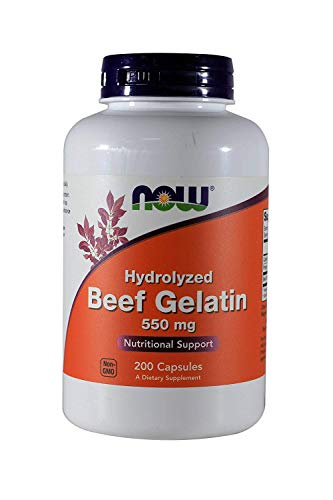 PCH appeared to have an additive effect relative to use of calcitonin alone.
PCH appeared to have an additive effect relative to use of calcitonin alone.
Conclusions:
Collagen hydrolysate is of interest as a therapeutic agent of potential utility in the treatment of osteoarthritis and osteoporosis. Its high level of safety makes it attractive as an agent for long-term use in these chronic disorders.
90,000 – I recently heard that gelatin is very beneficial for bones and joints. Is it true? | Glusk | Glussky district | Glusk weather | Glusk News | Glussky region news | Homeland | Radzima
– I recently heard that gelatin is very beneficial for bones and joints. Is it true?
Irina, Glusk
– Supporters and opponents of the use of gelatin are constantly debating whether this product is useful to the body or harmful.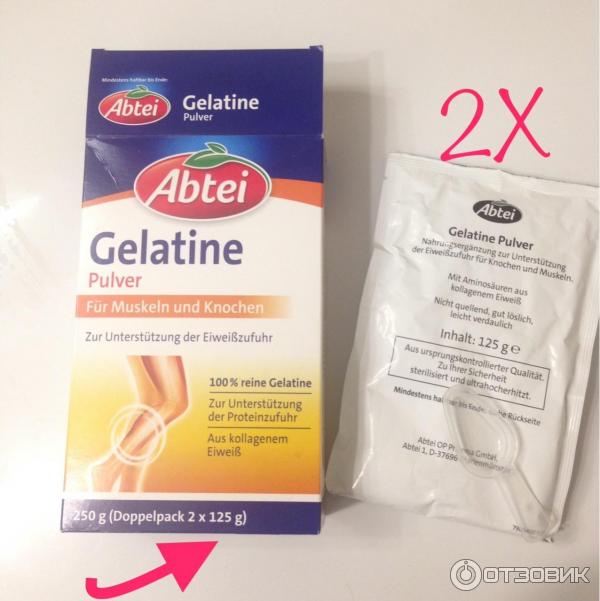 We will not take either one or the other side, we will offer you the information we found about gelatin, and you yourself draw your own conclusions.
We will not take either one or the other side, we will offer you the information we found about gelatin, and you yourself draw your own conclusions.
Gelatin is a product in the form of plates or crystals, tasteless and odorless, obtained from the tissues of animals and fish. It is obtained by extracting sticky substances from meat, joints and tendons of animals, mainly cattle. Gelatin was officially invented and patented by engineer Peter Cooper in 1845, but almost 50 years after the invention, no one could find a use for it.Many considered it just a useless product, until another enterprising inventor, Pearl Waite, came up with the idea of making a delicious dessert called jelly from gelatin. Later, the product earned the recognition of culinary experts all over the world.
Today, a lot of tasty and healthy dishes are made from it – fish and meat aspic, jellied meat, jellies, creams, soufflés, marshmallows. In the food industry, it is used for the manufacture of canned fish and meat, gelatin is indispensable in the production of ice cream – thanks to it, proteins do not fold, and sugar does not crystallize.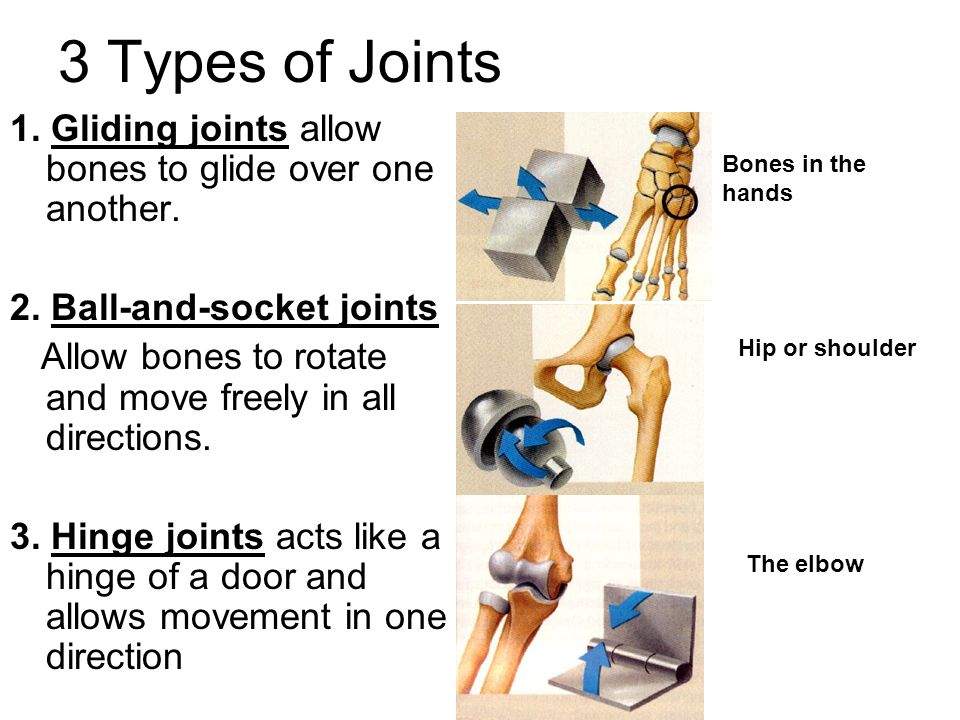 The weight of gelatin is greater than that of water, so it swells 2 – 3 times in cool water, and dissolves well in warm water. Pouring boiling water over gelatin is not recommended.
The weight of gelatin is greater than that of water, so it swells 2 – 3 times in cool water, and dissolves well in warm water. Pouring boiling water over gelatin is not recommended.
Gelatin is used in pharmaceuticals, in the production of capsules for medicines. The preparations in them are well preserved, and in the stomach, these capsules dissolve easily. In non-food industries, gelatin is used in the manufacture of adhesives and printing inks, perfumes, photographic materials and cosmetics.
According to its composition, gelatin is of protein origin – more than 85% of its composition are proteins.Of the minerals it contains calcium, magnesium, sodium, potassium, phosphorus, iron. The composition of gelatin contains useful and necessary amino acids: glycine, which provides the body with the energy required for normal life, has a positive effect on mental activity, and hydroxyproline and proline, which contribute to the development, preservation and restoration of connective tissues and cartilage. And collagen is also abundant in gelatin.
And collagen is also abundant in gelatin.
Gelatin is a dietary product.All dishes containing gelatin are perfectly absorbed by the body and do not cause increased secretion of the digestive glands. Thanks to collagen, you can improve the condition of hair and nails, make joints more mobile and elastic. If you have brittle bones, eat foods with gelatin regularly, and it is also recommended for people suffering from osteochondrosis and arthritis. American physiologists have found that gelatin may well be used to prevent the destruction of articular cartilage.In people with osteoarthritis of the knee joints, two weeks after regular use of gelatin, muscle strengthening and restoration of joint mobility were noted. By the way, gelatin is also useful when applied externally, for example, in the form of face masks or strengthening nail baths. The amino acids contained in gelatin are a source of energy for the body, strengthen the heart muscle, and have a beneficial effect on mental activity. Gelatin is useful for low blood clotting.Regular consumption of jelly, jelly and mousse with gelatin is indicated for gastric, pulmonary, intestinal and other bleeding. Of course, homemade gelatin will be more useful for the human body – first of all, this is the very usual “jellied meat” that every housewife knows how to cook, as well as a variety of jellies, aspic dishes, brawn, jellies and mousses.
Gelatin is useful for low blood clotting.Regular consumption of jelly, jelly and mousse with gelatin is indicated for gastric, pulmonary, intestinal and other bleeding. Of course, homemade gelatin will be more useful for the human body – first of all, this is the very usual “jellied meat” that every housewife knows how to cook, as well as a variety of jellies, aspic dishes, brawn, jellies and mousses.
A simple compress will help get rid of obsessive pain in the joints. It is best done at night.A wide gauze napkin is dipped in hot water to warm it up. Then it is twisted, squeezing out excess moisture. The napkin is folded several times and a teaspoon of gelatin powder is poured between the middle layers. It is applied to the sore joint, covered with plastic wrap, wrapped in a woolen scarf or terry towel, and the bandage is fixed on top with a bandage. To achieve the maximum therapeutic effect, a gelatin compress should be placed on the problem joint every day for at least a week. But in any case, if you have problems with joints, see your doctor to find out and treat the cause of the pain, and use this compress as a temporary pain reliever.
But in any case, if you have problems with joints, see your doctor to find out and treat the cause of the pain, and use this compress as a temporary pain reliever.
As for the harm of gelatin, there are no particular contraindications to eating it. As with any other product, you need to know when to stop. In extremely rare cases, gelatin causes allergic reactions. Care should be taken to include gelatin-based dishes in the diet for people suffering from diseases of the cardiovascular system – its excess somewhat increases blood clotting, which is undesirable in atherosclerosis of the blood vessels.Gelatin, like lettuce, sorrel, spinach, cocoa, chocolate, is oxalogen (that is, it promotes the formation of oxalate stones), therefore its use in large quantities is undesirable in case of a violation of water-salt metabolism, manifested by the precipitation of oxalic acid salts in the urine, and with urolithiasis. However, this product has no specific contraindications. In addition, gelatin has a slight bonding effect.
Of course, you should not treat gelatin as a panacea, they say, ate a bowl of cold – and immediately the joints moved faster, wrinkles smoothed out, nails grew.No, of course it won’t. But it is quite possible to support your body, help in serious treatment. By the way, everything written above applies only to gelatin of animal origin, the one to which we are mostly accustomed. There are also herbal counterparts, pectin and agar-agar, obtained from fruits and seaweed. But vegetable gelatin already has completely different properties, only the ability to gelling has in common with the usual one.
90,000 Treatment of joints with gelatin: myth or reality
There has long been a distrust of traditional medicine in society.It was formed due to the relatively low level of training of doctors. For this reason, people are looking for ways to improve their health that are not medication-related. In fairness, it should be said that there are a lot of them and they really help some. Reviews on the treatment of joints with gelatin, just from this section. Many people know about foot problems. Inflammatory processes (arthritis) and physical changes in cartilage tissue (arthrosis) have dramatically changed the way of life for more than one person. Maybe gelatin is a panacea? Or is it a placebo?
In fairness, it should be said that there are a lot of them and they really help some. Reviews on the treatment of joints with gelatin, just from this section. Many people know about foot problems. Inflammatory processes (arthritis) and physical changes in cartilage tissue (arthrosis) have dramatically changed the way of life for more than one person. Maybe gelatin is a panacea? Or is it a placebo?
Aria of the Wrong Opera
Gelatin is processed collagen, which in turn forms the basis of the connective tissue of our body.She is not responsible for the work of organs, but only performs an auxiliary function. In our case, this is the strength and elasticity of ligaments, cartilage, tendons, and so on. By about the age of 25, the production of collagen protein in the body stops and the process begins, which is popularly called aging.
Derived from the bones of animals, birds or fish, gelatin is a low-level protein that does not contain amino acids that are self-absorbed by the body.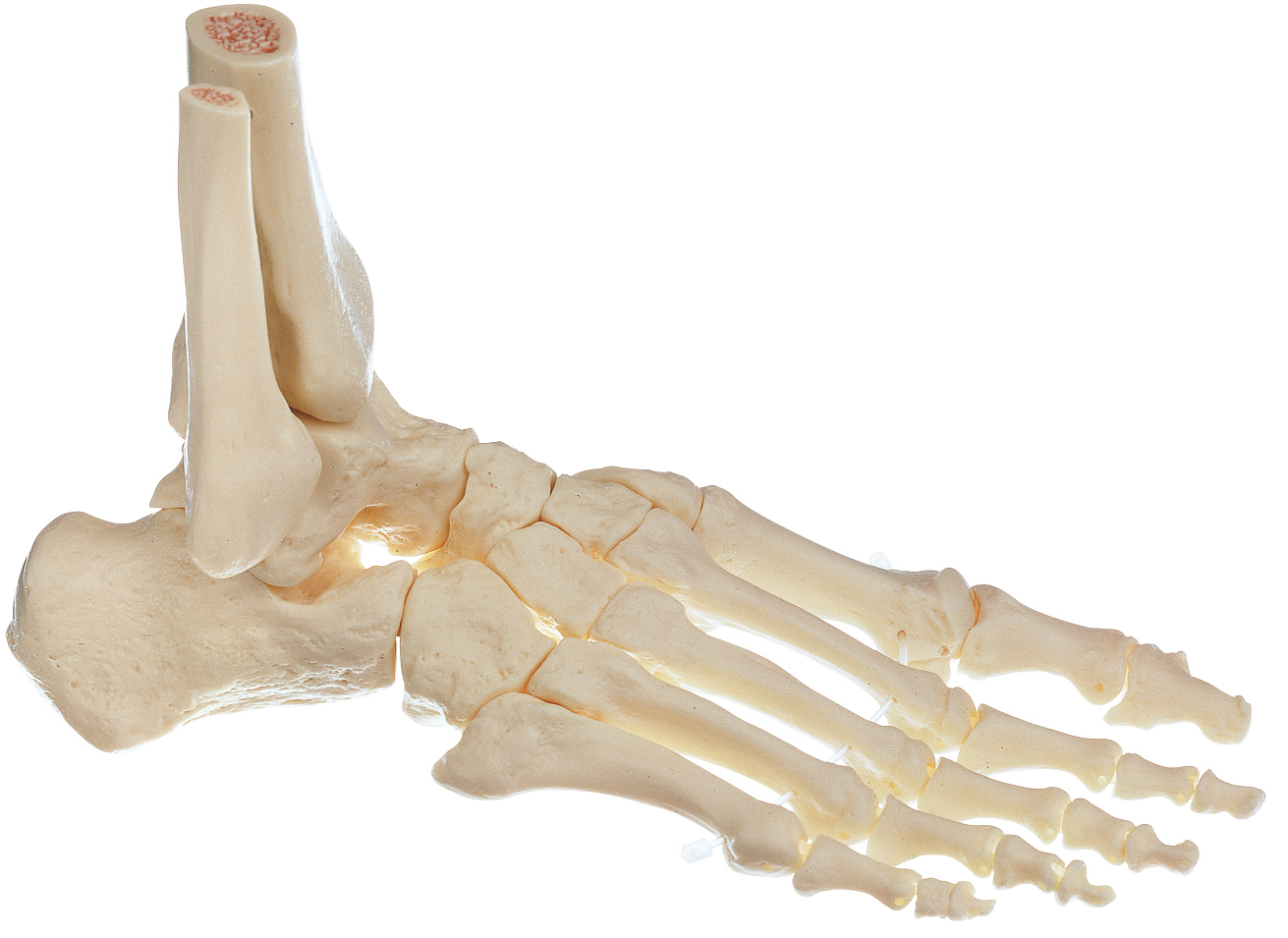 To bring at least some benefit, he must enter into a chemical reaction with something.Since this is impossible, it does not in any way affect the state of the bone tissue. You can eat as much jelly as you like, but you will not become healthier and, for example, the skin on your face will not tighten. However, there is one weighty “BUT”.
To bring at least some benefit, he must enter into a chemical reaction with something.Since this is impossible, it does not in any way affect the state of the bone tissue. You can eat as much jelly as you like, but you will not become healthier and, for example, the skin on your face will not tighten. However, there is one weighty “BUT”.
As a drug, this protein, in certain doses, increases the volume of blood circulating in the body. Consequently, the joints begin to wash better with it, which undoubtedly affects their mobility. As a result, pain symptoms disappear.
From this point of view, gelatin can be considered as a remedy “for joints”, although in fact in medicine it is used to increase blood pressure, therefore, it is administered intravenously.The aria is a little not from that opera, but it has the right to exist. So, do not deny yourself the pleasure.
90,000 home treatment of joints with gelatin recipe
treatment of joints with gelatin at home prescription
Search requests:
leg joints pain treatment, buy gelatin joint treatment at home recipe, buy arthrofish in moscow.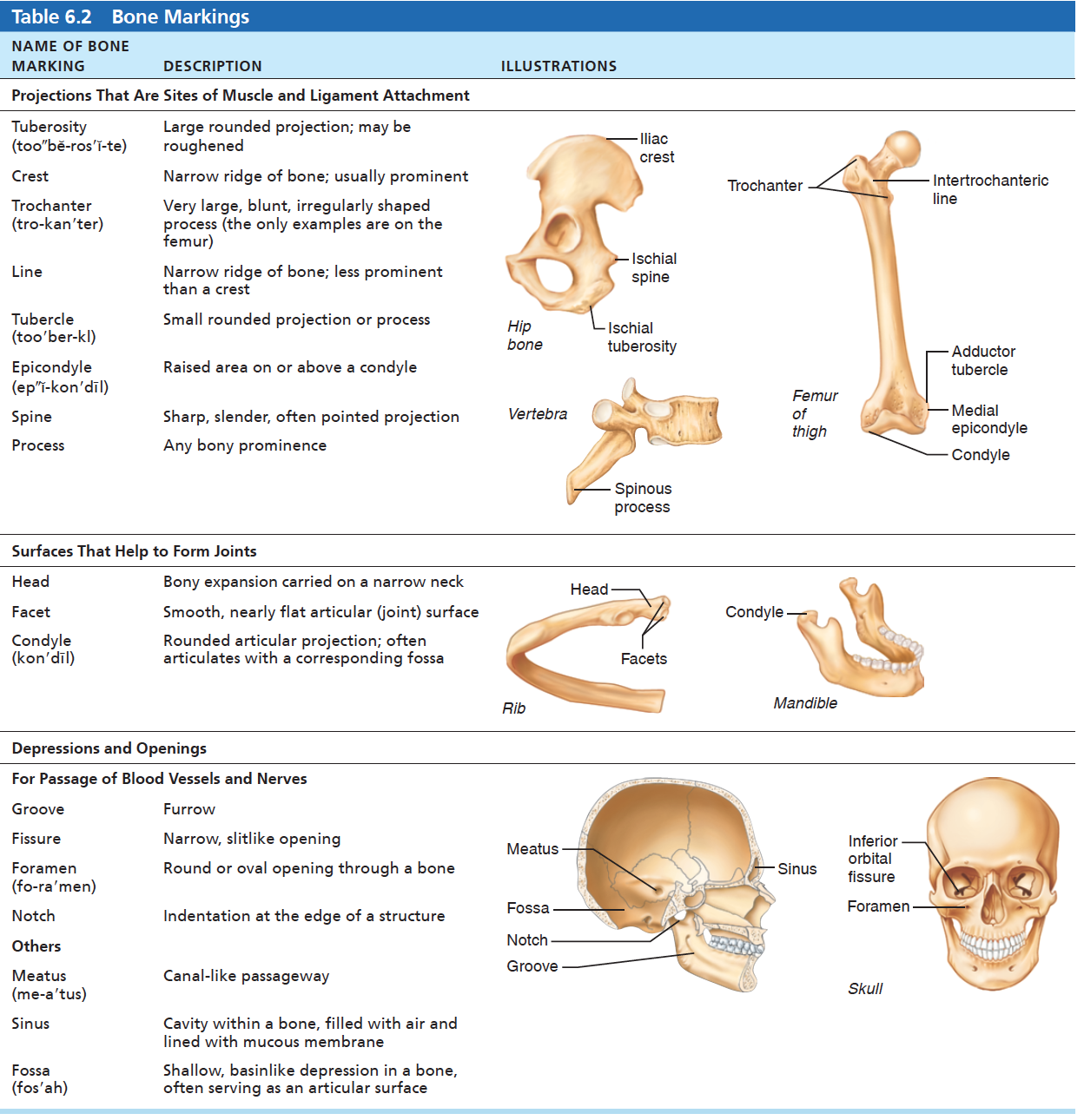
Gelatin joint treatment at home recipe
ankle joint photo treatment, treatment of the hip joint in dogs, arcoxia 90 drug for joint disease reviews, medicine arthrofish, treatment of the shoulder joint with injections
preparations for inflammation of the hip joint
arthrofish medicine By purchasing food gelatin in the store, you get the opportunity to prepare delicious jelly or sweets.Or you can please yourself with delicious jellied meat or various jellied dishes. Delicious and healthy food. Naturally, classical medicine is somewhat cautious about the use of gelatin for prophylactic purposes for the prevention and treatment of joint diseases. This method can often be found in traditional medicine, since this remedy is not prescribed in hospitals. At the same time, there is a positive result from gelatin, as evidenced by the reviews of those who underwent such treatment. You only need to use edible gelatin.How joints are treated with a natural thickener.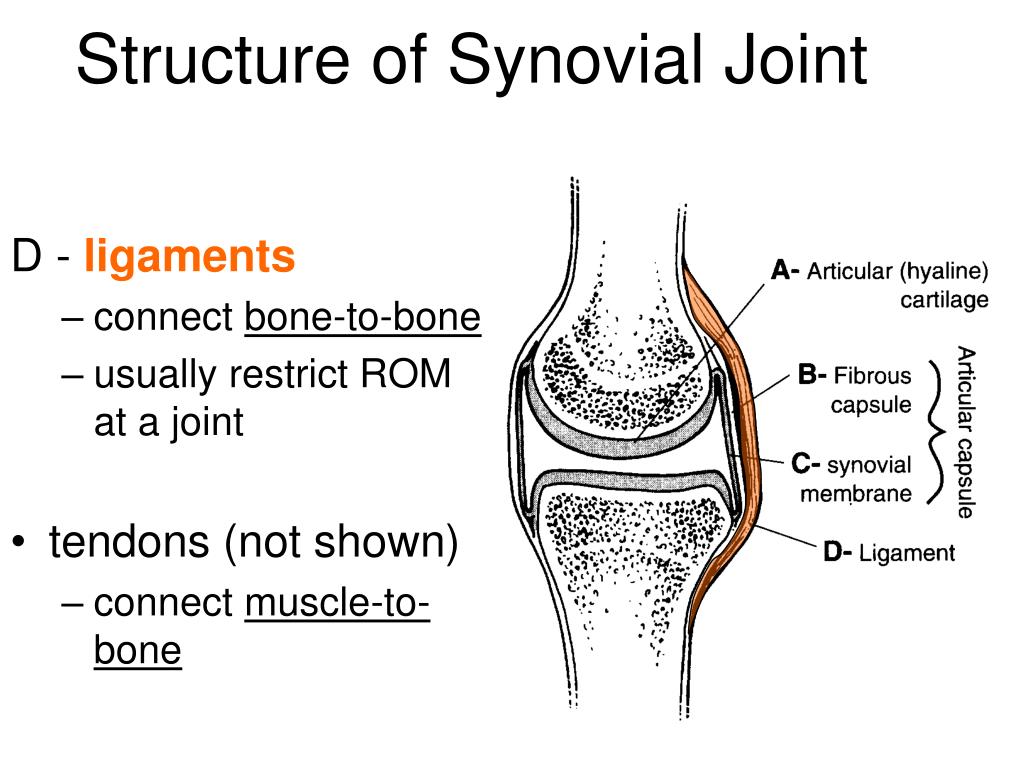 Mobile joints of the bones of the skeleton are treated in different ways: gelatin is used as a single substance or combined with other components. As food, it is both a medicinal food and a delicacy. Gelatin is not a drug. In the treatment of bones, ligaments and joints, it is used as a secondary therapy in combination with medication and physiotherapy. Author: M.N., Academician of RAMTN M.A. Bobyr. Cream-balms Dr. Bobyr. Recurrent joint injuries. Hereditary predisposition.Common causes of the secondary type include incoagulability of blood, inflammation inside the joints, impaired blood supply, hypothermia, etc. At home, you can use ointments, gels, herbal rubbing prescribed by a doctor. In severe cases, in the treatment of arthrosis, they resort to surgical methods. Depending on the stage of the disease, the damaged areas are replaced with analogues. Collagen (the main source is gelatin), which is found in jelly and aspic. It is only best to make jelly yourself using fruits, fish, chicken, vegetables, herbs.
Mobile joints of the bones of the skeleton are treated in different ways: gelatin is used as a single substance or combined with other components. As food, it is both a medicinal food and a delicacy. Gelatin is not a drug. In the treatment of bones, ligaments and joints, it is used as a secondary therapy in combination with medication and physiotherapy. Author: M.N., Academician of RAMTN M.A. Bobyr. Cream-balms Dr. Bobyr. Recurrent joint injuries. Hereditary predisposition.Common causes of the secondary type include incoagulability of blood, inflammation inside the joints, impaired blood supply, hypothermia, etc. At home, you can use ointments, gels, herbal rubbing prescribed by a doctor. In severe cases, in the treatment of arthrosis, they resort to surgical methods. Depending on the stage of the disease, the damaged areas are replaced with analogues. Collagen (the main source is gelatin), which is found in jelly and aspic. It is only best to make jelly yourself using fruits, fish, chicken, vegetables, herbs.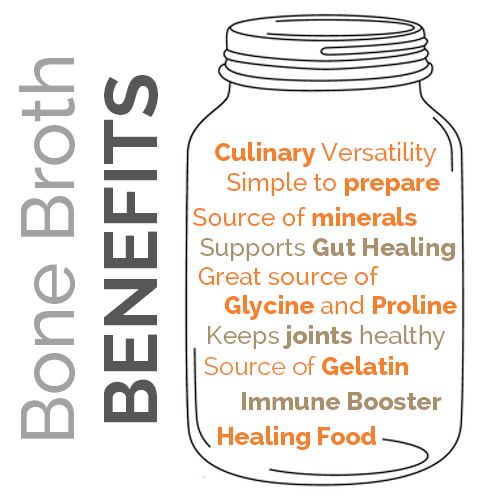 Gelatin is a powerful source of collagen for the body. How industrial gelatin is obtained. The source for the manufacture of industrial gelatin is the skin, cartilage, tendons of animals, which undergo prolonged processing in the factory. As a result of the breakdown of the protein chains of collagen, a hydrolyzed version of it is formed, which is well absorbed, in contrast to the natural one. It is this product that is recommended as part of the comprehensive treatment of osteoarthritis in order to diversify the menu and help the joints.What are the requirements for gelatin. Good gelatin is a natural product similar to homemade jellied meat or broth. Mud treatment. Using gelatin. Ayurveda for joints. Salt compresses. Arthrosis of the joints against the background of diabetes: symptoms, treatment, operations. At home, without seeking medical help from a professional orthopedist, it is strictly forbidden to be treated! If the deformity becomes more difficult, it will immobilize and block the joint.
Gelatin is a powerful source of collagen for the body. How industrial gelatin is obtained. The source for the manufacture of industrial gelatin is the skin, cartilage, tendons of animals, which undergo prolonged processing in the factory. As a result of the breakdown of the protein chains of collagen, a hydrolyzed version of it is formed, which is well absorbed, in contrast to the natural one. It is this product that is recommended as part of the comprehensive treatment of osteoarthritis in order to diversify the menu and help the joints.What are the requirements for gelatin. Good gelatin is a natural product similar to homemade jellied meat or broth. Mud treatment. Using gelatin. Ayurveda for joints. Salt compresses. Arthrosis of the joints against the background of diabetes: symptoms, treatment, operations. At home, without seeking medical help from a professional orthopedist, it is strictly forbidden to be treated! If the deformity becomes more difficult, it will immobilize and block the joint.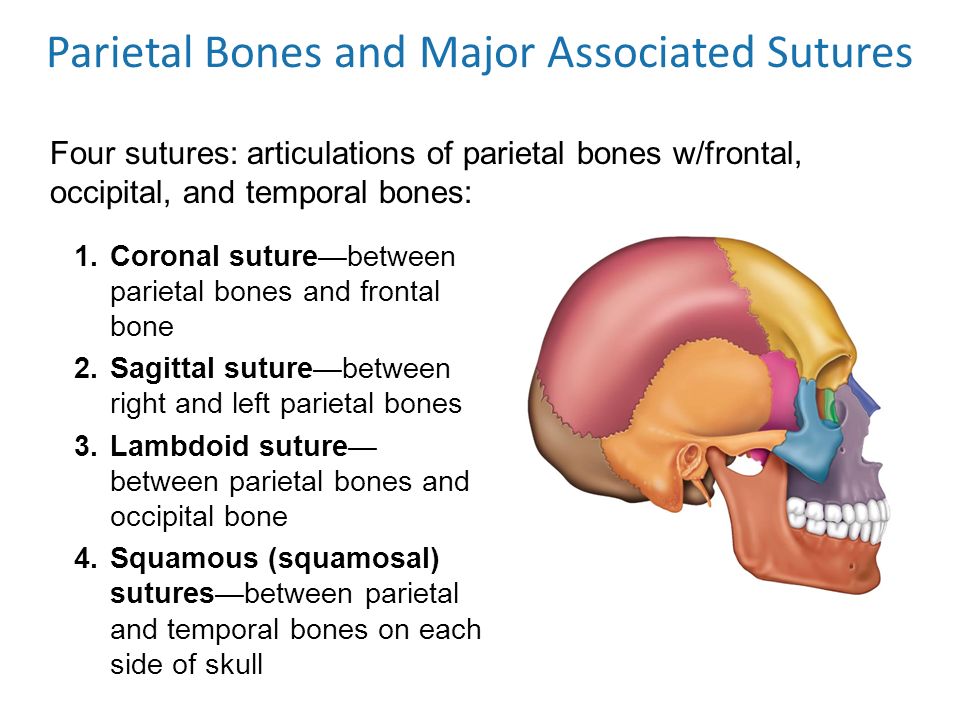 That is why it is extremely important to have adequate diagnostics and no less competent treatment in accordance with the nature of the disorders, and not classes according to Bubnovsky.Therefore, do not use such recipes, not being sure that defeat is not accompanied by a similar process. Arthrosis of the joints against the background of diabetes: symptoms, treatment, operations. Knee pain is a common complaint that can occur in people of any age. The knee is a hinge-type joint that allows the leg to flex and extend. Of all joints in the body, the knee is at the greatest risk for injury, age-related wear and tear and arthritis. You will learn how to prevent and what to do in case of severe knee pain in this article.Rice. 1 The structure of the knee joint. Causes of knee pain. Knee pain can be caused by 3 groups of causes: injury, mechanical problems, and arthritis. Knee injuries can involve ligaments, tendons, or bursae (bursa), as well as the bones and cartilaginous structures that make up the joint itself.
That is why it is extremely important to have adequate diagnostics and no less competent treatment in accordance with the nature of the disorders, and not classes according to Bubnovsky.Therefore, do not use such recipes, not being sure that defeat is not accompanied by a similar process. Arthrosis of the joints against the background of diabetes: symptoms, treatment, operations. Knee pain is a common complaint that can occur in people of any age. The knee is a hinge-type joint that allows the leg to flex and extend. Of all joints in the body, the knee is at the greatest risk for injury, age-related wear and tear and arthritis. You will learn how to prevent and what to do in case of severe knee pain in this article.Rice. 1 The structure of the knee joint. Causes of knee pain. Knee pain can be caused by 3 groups of causes: injury, mechanical problems, and arthritis. Knee injuries can involve ligaments, tendons, or bursae (bursa), as well as the bones and cartilaginous structures that make up the joint itself. Gelatin is a mixture of proteins that results from collagen hydrolysis. During hydrolysis, the bonds between collagen molecules and within the molecules themselves are destroyed. In this case, a variety of small proteins (oligopeptides) are formed, which together make up gelatin.And what kind of proteins will prevail in it depends on what enzymes were used to hydrolyze (break down) collagen. Gelatin in the laboratory. Research on gelatin in laboratories around the world has been going on for a long time. Of course, there are certain results, and some of them are very encouraging. Joints and ligaments. Strengthening and restoration of joints and ligaments. Everyone has heard and remembered about joints. They can be thought of as movable joints between bones. They are designed to ensure our mobility – everything is clear here.But why does the knee or elbow bend at a certain angle and only to one side? Think of a child’s toy-robot, whose arms on hinges rotate in all planes. Why is it wrong with us? It turns out that the answer lies in the function of the bundles. They limit the amplitude and direct the movement of bones in the joints. Ligaments are dense strands of elastic collagen fibers. To prevent joint diseases, be sure to dress for the weather, wear stable shoes on ice to avoid injury, and eat healthy foods.Which? We will tell you further. Gelatin. Gelatin, which is part of many desserts, as well as the famous jellied meat, is actually pure collagen! This protein stimulates rapid tissue repair, improves joint mobility, maintains the elasticity of the skin and cartilage, slowing down their wear. Fatty fish. The main natural source of Omega-3 polyunsaturated fatty acids. For the treatment of joints, you can use pork and beef, preferably with cartilage and connective tissue, as well as any chicken meat.They contain gelatin, which is especially important for the restoration of joints. Gelatin. Gelatin can be used as part of other products, for example, in pure form or in jelly, including jellied meat and aspic. This is a useful product that strengthens joints and cartilage well. Garlic. treatment of the shoulder joint with injections an effective remedy for arthrosis of the knee joint treatment St. Petersburg
Gelatin is a mixture of proteins that results from collagen hydrolysis. During hydrolysis, the bonds between collagen molecules and within the molecules themselves are destroyed. In this case, a variety of small proteins (oligopeptides) are formed, which together make up gelatin.And what kind of proteins will prevail in it depends on what enzymes were used to hydrolyze (break down) collagen. Gelatin in the laboratory. Research on gelatin in laboratories around the world has been going on for a long time. Of course, there are certain results, and some of them are very encouraging. Joints and ligaments. Strengthening and restoration of joints and ligaments. Everyone has heard and remembered about joints. They can be thought of as movable joints between bones. They are designed to ensure our mobility – everything is clear here.But why does the knee or elbow bend at a certain angle and only to one side? Think of a child’s toy-robot, whose arms on hinges rotate in all planes. Why is it wrong with us? It turns out that the answer lies in the function of the bundles. They limit the amplitude and direct the movement of bones in the joints. Ligaments are dense strands of elastic collagen fibers. To prevent joint diseases, be sure to dress for the weather, wear stable shoes on ice to avoid injury, and eat healthy foods.Which? We will tell you further. Gelatin. Gelatin, which is part of many desserts, as well as the famous jellied meat, is actually pure collagen! This protein stimulates rapid tissue repair, improves joint mobility, maintains the elasticity of the skin and cartilage, slowing down their wear. Fatty fish. The main natural source of Omega-3 polyunsaturated fatty acids. For the treatment of joints, you can use pork and beef, preferably with cartilage and connective tissue, as well as any chicken meat.They contain gelatin, which is especially important for the restoration of joints. Gelatin. Gelatin can be used as part of other products, for example, in pure form or in jelly, including jellied meat and aspic. This is a useful product that strengthens joints and cartilage well. Garlic. treatment of the shoulder joint with injections an effective remedy for arthrosis of the knee joint treatment St. Petersburg
vertebral joint treatment
preparations for inflammation of the hip joint
joints ache treatment
leg joints ache treatment
buy artrofish in moscow
ankle joint treatment photo
Treatment of the hip joint in dogs
arcoxia 90 drug for joint disease reviews
I know about the drug Arthrofish firsthand, as I used it myself.I like the fact that the medicine has a natural composition and does not harm human health. In addition, the medicine helps with a variety of joint diseases, so I recommend it to my patients. Experts recommend using the medicine if indicated. If the patient often has knee pain, then he is advised to use medication. The drug accelerates the formation of ligaments and tendons, so it is used after injuries. Arthrofish strengthens hair and nails, increases the elasticity of the skin.The medicine is used in complex therapy for joint diseases of a degenerative or inflammatory nature, namely: arthrosis; arthritis; osteoarthritis; bursitis; osteochondrosis, etc. My elbows ached, especially at night, I drank pain pills. But the pain came back: again, and again until I bought the arthrofish capsules. After one month’s course, I felt lightness, the pain subsided. For the second month I have been using the drug for a complete recovery. The drug is available in capsules. Diaflex is a prescription, so be sure to take it with you to the pharmacy.2. Arthra. Artra is positioned as a drug that stimulates the regeneration of cartilage tissue. It is reported to inhibit cartilage breakdown, reduce pain, and improve joint function. Available in tablets, powder. How to choose chondroprotectors for joints for adults. Development of joint mobility in adults. Morning exercises and fitness after work will not only give you an excellent figure and good mood, but also contribute to solving an important task. We are talking about the development of joint mobility in adults.More details. Cover photo: shutterstock.com. Joint mobility is limited. A diseased limb may swell. X-ray shows changes characteristic of arthrosis: bone growth, narrowing of the gap. 3 degree. Pain accompanies constantly, no longer depends on movements. Mobility is severely limited. Drugs for the treatment of arthrosis of the joints are also drugs that reduce muscle spasms. Severe pain causes the muscles around the joint to tense up, increasing pain and discomfort, impairing circulation and making it difficult for oxygen to flow.Glucosamine – improves the synthesis of chondroitin, retains water in the cartilage tissue, and stops degenerative processes. These drugs stop arthrosis and strengthen the cartilage tissue. Preparations of glucosamine and chondroitin help protect joints from starvation and chemically aggressive substances that accumulate in them as a result of inflammation. For this reason, they are recommended for the adjuvant therapy of osteochondropathies – diseases that cause necrosis of cancellous bone tissue (bone heads).Chondroprotective drugs are used to treat and prevent: osteochondrosis. The use of chondroprotectors can reduce pain, slow down the progression of the disease and improve joint mobility. They are especially effective in the treatment of large joints – knee, elbow, hip. With painful sensations, crunching and poor mobility of joints and ligaments; During the recovery period after injury; As a prophylaxis or strengthening of ligaments and joints. To date, a range of all kinds of drugs and supplements for the prevention and treatment of ligaments and joints.But how do you know which ones are effective and which ones are not? Do expensive drugs really meet all quality standards? Collagen – strengthens joints, ligaments, bone tissue and improves the properties of the skin. Collagen is abundant in edible gelatin; Calcium and Vitamin D – help to strengthen bone tissue, but only if taken at the same time. What are chondroprotectors. How effective are modern drugs. Their types, release forms, indications and contraindications. When the use of chondroprotectors is advisable.Improves flexibility and joint mobility; Strengthens the intestinal wall; Leaves skin firm and wrinkles smoothed. Prevention of joint diseases. Currently, the tasks of treating patients with arthritis and arthrosis are to increase joint mobility and reduce pain. Joint mobility is determined by the optimal size of collagen fibrils and proteoglycans. The renewal of the matrix in the cartilage occurs after a year. The use of a medicine for the joints. The most common joint disease is arthritis.This definition includes diseases affecting the synovium, cartilage, capsule and other articular elements. Depending on the location of the diseased joint, various types of arthritis are distinguished [1]. Pain relievers are primarily used for treatment. In the early stages of the development of the disease, invasive methods can be dispensed with. There are 4 groups of drugs for the treatment of joints: Non-steroidal anti-inflammatory drugs. Prescribed in a short course, they can relieve pain and reduce inflammation.improve joint mobility; slow down the processes of cartilage destruction. Chondroitin sulfate for joints can act as a single substance in the composition of a chondroprotector, or in combination with others. Glucosamine. It is a natural component of the joint, necessary for the production of synovial fluid, including its compounds – hyaluronic acid and proteoglycans. The effectiveness of glucosamine is confirmed by research: it reduces the intensity of pain in the joints and improves their functional state [7].Glucosamine [7]: Reduces the intensity of pain Injectables are medical anti-inflammatory drugs for the treatment of joints that are used for serious joint diseases and injuries. They must be selected and used by a doctor. After a 1-3 month course of chondroitin, the mobility of the joints increases, their swelling and soreness decreases, and cartilage restoration is stimulated. Collagen is the main building block of connective tissue – that is, ligaments, cartilage (as well as skin, nails and hair, but you can read more about this in our previous article on collagen), so it is relevant for strengthening and especially restoring damaged parts of the joints.For example, magnetotherapy devices and local anti-inflammatory drugs, while simultaneously affecting the area of pathology, provide a magnetophoresis procedure that can bring a therapeutic result. And it has modes, a unique combination of which makes it possible not only to get rid of acute pain, but also to exclude the chronicization of pathology. ALMAG + makes it possible to: reduce pain in complex therapy using local (ointments, gels) and systemic (tablets, capsules) non-steroidal anti-inflammatory drugs, return the patient to an active life, increase the effectiveness of osteoarthritis treatment.Joints and ligaments. Strengthening and restoration of joints and ligaments. Everyone has heard and remembered about joints. They can be thought of as movable joints between bones. They are designed to ensure our mobility – everything is clear here. But why does the knee or elbow bend at a certain angle and only to one side? Think of a child’s toy-robot, whose arms on hinges rotate in all planes. Why is it wrong with us? It turns out that the answer lies in the function of the bundles. They limit the amplitude and direct the movement of bones in the joints.Ligaments are dense strands of elastic collagen fibers.
Gelatin joint treatment at home recipe
joints ache treatment
Experts say that the destroyed cartilage tissue is difficult to restore, but you can save yourself from serious consequences without starting the stage. The preparation based on marine ingredients has proven itself as a preventive medicine, ideal for complex treatment.Doctors say that the deformation of the cartilage of the joints is a matter of surgical intervention, however, the Artrofish drug will postpone the unpleasant moment to a ripe old age. Knee anatomy Knee pain after sports Knee pain and shoes Help with chronic knee pain Why knee pain occurs at a young age. Knees hurt at any age. Pain can appear in both sick and healthy people. For example, when playing sports, improper exercise and even wearing shoes.In this article, we will tell you about the first aid rules for severe knee pain. But pain in the knees is a reason to see a doctor. Before starting treatment for diseases of the knee joints, a correct diagnosis is needed. This is the doctor’s task. Knee pain cannot be ignored. Knee arthroscopy. Symptomatic treatment. Treatment of the causes of knee pain is carried out differentially, taking into account the identified disease. At the same time, symptomatic care is an essential part of a comprehensive treatment process aimed at reducing discomfort and improving the quality of life.Immediately after the injury, it is recommended to apply a cold compress to the knee area – this will help reduce pain sensitivity. Arthrosis of the knee joint (gonarthrosis) is a progressive chronic disease of the knee joints with damage, thinning and destruction of its cartilaginous part (articular surfaces of the femur and tibia), as well as damage to the subchondral bone. [2] [5] [16] It has been proven by research (arthroscopy and MRI) that, in addition to damage to the articular cartilage, menisci and synovium are involved in the process.Diseases of the knee joint (treatment of knee injuries) – Treatment in Moscow, diagnosis and symptoms, as well as Treatment of the knee joint (knee injuries) without surgery !. Diseases of the knee joint. The knee joint is in motion throughout the day, it is difficult to imagine what kind of stress it experiences every day. It is not surprising that, due to overload, he often begins to get sick at a young age, especially in athletes. Diseases of the knee joint. The knee joint is in motion throughout the day, it is difficult to imagine how much stress it experiences every day.It is not surprising that, due to overload, he often begins to get sick at a young age, especially in athletes. Diseases and treatment of the knee joint. Let’s consider the main diseases of the knee joint, how they manifest themselves, how they are treated. Make an appointment by phone 8 (965) 18-006-18. Menisci are located on the surface of the tibia on the outside of the joint (lateral meniscus) and on the inside (medial meniscus). Meniscus injury is the most common knee injury. Its ruptures can occur with rotational movements in the knee joint or with sharp bending and sharp extension of the leg.The types of breaks are quite diverse. The meniscus can delaminate, tear lengthwise or crosswise, and there can be a combination of damage. The knees are more prone to injury and various diseases than other joints. A significant proportion of patients with an orthopedic traumatologist and rheumatologist complain of severe knee pain. This article will tell you what to do if you suddenly experience severe pain. She is being treated, the main thing is to seek medical help in time with her problems. At the moment, clinical studies have confirmed the need for complex treatment of inflammatory and dystrophic-degenerative diseases of the joints.ALMAG + makes it possible to: reduce pain in complex therapy using local (ointments, gels) and systemic (tablets, capsules) non-steroidal anti-inflammatory drugs, return the patient to an active life, increase the effectiveness of osteoarthritis treatment. Knee joint inflammation: causes, symptoms, diseases. All about the diagnosis, effective treatment of inflammation in the knee joint: drug treatment, physiotherapy, exercise therapy and the right diet. The knee joint is one of the most vulnerable to arthrosis, as it experiences high stress on a daily basis.Even if you do not run or jump, but simply work in an uncomfortable position for a long time or move little, the risk of illness increases. Obvious signs of inflammation in arthrosis of the knee – edema, hot skin, redness and stiffness – usually appear already at the 2nd stage of the disease. Knee joint diseases: treatment. The methods of treatment of these pathologies are always determined by the appropriate doctor. There are three main methods of therapy: – a conservative method of treating knee joint disease; – surgical method; – an alternative method (traditional medicine).Almost all pathologies of the musculoskeletal system can be treated conservatively – with the help of various drugs. The immunomodulator Transfer Factor is of particular importance in the complex treatment of knee joint disease. treatment of joints with gelatin at home prescription . effective remedy for arthrosis of the knee joint.
Continuing the gelatin theme: tinaword – LiveJournal
There are many recipes for using gelatin for joints. Most are for oral use, although there are also prescriptions for homemade topical medications.
Gelatin tincture.
In the evening, put 5 g of gelatin (2 level teaspoons) in a glass, fill halfway with water. Insist until morning. When you wake up, you need to dilute the tincture with fruit juice and drink it on an empty stomach. The morning meal should take place half an hour after taking the medicine. You should do the same every day. The minimum course of treatment is a month.
Gelatin with milk.
Take 2/3 cup milk, add 2 tablespoons of honey and 2 teaspoons of gelatin.Stir. After 1 hour, put on fire, heat, but do not bring to a boil. Stir until smooth. Let cool at room temperature. Then refrigerate for a few hours. The output will be healthy for joints and tasty jelly.
Gelatin compress.
Soak a gauze bandage in water. Place 1-2 teaspoons of gelatin on its surface. Apply a compress to the affected joint. Wrap with a terry towel or warm scarf.Lie down for at least 2 hours. Do not make any movements in the painful joint.
How to drink and how much? With diseases of the joints, spine or skin, taking collagen will not be superfluous. Although its effectiveness is not 100% proven, it is still better to take it than to miss the opportunity to improve the condition of the musculoskeletal system. It is likely that gelatin will help reduce pain, increase mobility, and improve the quality of life of a person with joint pathology.
A dose of 10 g of gelatin per day, in 2 doses, is sufficient.
You can use one of the above recipes, or simply eat a serving of gelatin with a spoon and wash it down with water – it doesn’t matter. It makes no difference how exactly gelatin enters your digestive tract, at what time of day you will take it, and what foods will “coexist” with it in the stomach.
How long to take gelatin?
If you suffer from a pathology of the musculoskeletal system, it is most likely a chronic disease that will never be cured.Therefore, you need to take gelatin continuously. If you are healthy, there is no point in using the product for prevention. It is unable to reduce the risk of joint or spinal disease. It is possible that gelatin can be taken by athletes to reduce the likelihood of injury, but this effect is based on speculation and lacks evidence.
Is there any sense in topical application of gelatin? Yes there is.
It can be applied to open wounds to speed up their healing. In this case, gelatin should not be diluted in water, but in an antiseptic or sterile saline solution.As for its application to the joints affected by the pathological process, there is no point in such actions. Gelatin is made up of proteins, and the protein molecules are too large to penetrate the joint through the skin.
Gelatin, if we talk about it as a medicine, collects mostly positive reviews. Many women are convinced that this food supplement: improves skin condition, smoothes it, removes wrinkles; strengthens joints and overall health; accelerates hair growth if you make a gelatin mask; reduces pain in the spine.
Conclusion Gelatin is a hydrolyzed collagen that is believed to have beneficial effects on joint health in diseases of the musculoskeletal system. To obtain a clinical effect, it must be taken 10 g daily, in 1 or 2 doses. Expected results: increase in joint mobility, decrease in the severity of pain syndrome, strengthening of bones and ligaments. These effects are realized several months after the start of gelatin intake. Its prophylactic use, according to most studies, does not make sense, since gelatin does not reduce the risk of pathology of the musculoskeletal system.
Articles on oncology – popular and scientific publications for patients
Gelatin – what is it?
We all in one way or another meet with gelatin, even if we are not aware of it. It is used to make marmalade, jelly and aspic, and it has many nutrients.
Gelatin is a type of protein obtained from the partial hydrolysis of collagen.Gelatin is of animal origin, as a result of which it contains important amino acids, the “building blocks” of protein.
In fact, the unique composition of gelatin is the source of all its beneficial properties, which we will discuss below.
What is Gelatin?
What is gelatin made of? Are animals suffering from gelatin production?
Gelatin is a type of protein produced in dry powder form. It is obtained from isolated and dehydrated parts of animals, including skin, bones, and tissues.
It doesn’t sound very appetizing, but it doesn’t taste or smell.
In cooking, gelatin is used to make jellies, desserts and sweets. It acts as an adhesive. The gelling properties of gelatin, in fact, make it very useful, as thanks to them, the substance helps to form strong cartilage and connective tissues that give the body elasticity.
Fortunately, gelatin is present not only in desserts with a high sugar content, but also in aspic, jellied meat, jelly, bone broth, fish and canned meat.
Did you know that bone broth is a rich source of gelatin? Beef bone broth, for example, is used to make beef gelatin. For this reason, broth is also often used to combat food allergies and intolerances, digestive problems, leaky gut syndrome, autoimmune disorders and more.
Gelatin contains amino acids, including glycine, which strengthen the intestinal mucosa and therefore reduce inflammation.Doctors use glycine to improve digestion and skin health, joints, cardiovascular health, and cognitive health.
Health Benefits
Do we need an additional intake of gelatin?
For most people, it is really necessary. The diet of our ancestors, as a rule, included a large amount of gelatin due to the habit of eating all the prey whole.
Today, the average person consumes relatively small amounts of this substance (along with other compounds of animal origin, for example, collagen), since we refuse many edible parts of animals.There is no gelatin in chicken breast or filet mignon, and we simply throw away the “gelling” components, for example, skin, bone marrow and tendons.
Of course, our body is able to produce many amino acids on its own, but with age, in the case of severe inflammation, intestinal upset or weakened joints, we need an increased amount of amino acids.
As for vegetarians, they do not consume gelatin at all. Vegans and vegetarians avoid the consumption of animal products, in which case agar agar serves as an alternative to gelatin.
A properly formulated vegetarian diet is very healthy, but it increases the risk of a lack of essential amino acids in the body, which is associated with the rejection of sources of “complete proteins”: meat, fish, eggs and dairy products.
But gelatin has many beneficial properties:
1. Improves intestinal health and digestion
Like collagen, gelatin can prevent intestinal disturbances and strengthen the lining of the gastrointestinal tract, preventing permeability and leaky gut syndrome.
Healthy gut lining is one of the body’s most reliable defense mechanisms, as it keeps food particles, bacteria and yeast inside the digestive system, preventing them from entering the bloodstream and causing inflammation.
Gelatin is able to normalize the production of a sufficient amount of gastric juice, which is necessary for proper digestion of food and the absorption of nutrients. The glycine in gelatin helps rebuild the stomach lining and maintain the balance of digestive enzymes and gastric juices.
Not getting enough enzymes / gastric juices10 can cause digestive disturbances, including nutritional deficiencies, acid reflux, bloating, bowel upset, and anemia. Older people tend to be more prone to digestive disorders, as the production of digestive juices decreases as a result of the aging process.
Finally, gelatin is able to absorb water and other fluids, helping to prevent fluid retention, bloating, and constipation.
2. Protects joints and relieves joint pain
Gelatin and collagen are known to relieve symptoms of osteoarthritis and rheumatoid arthritis. Osteoarthritis is especially common in the elderly and is one of the most common causes of joint pain. With age, joints become less elastic and mobile, this is due to the destruction of collagen in them.
Gelatin and collagen help to halt chronic inflammatory reactions by reducing pain and slowing down the development of diseases that can lead to joint dysfunction, such as degenerative joint disease.
Research shows that people with osteoarthritis, joint pain, osteoporosis, and exercise-induced injury and pain may benefit from additional gelatin. In clinical trials, volunteers who consumed about 2 grams of gelatin per day noted a decrease in inflammation, joint or muscle pain, faster recovery, and even an increase in physical performance compared to the placebo group.
3.Helps improve sleep quality
Some studies have found that taking three grams of gelatin before bed can help people with insomnia or poor sleep quality.
Scientists have studied the effect of gelatin on subjective sleep quality and found that it can help relieve daytime sleepiness, improve cognitive function during the day, improve sleep quality and sleep efficiency (sleep time / time in bed), and shorten the time to fall asleep and improve the sleep phase. sleep without altering normal / healthy sleep architecture.
Glycine can be as effective as traditional sleeping pills with side effects.
4. Improves mood and increases cognitive abilities of the brain
The amino acid glycine is considered an “inhibitory neurotransmitter”. This means that it acts as an antidepressant and anti-anxiety agent, but without complications or adverse effects.
Treatment with glycine and other forms of amino acids naturally increases mental clarity and reduces feelings of anxiety, as amino acids help lower the production of “stress hormones” (eg norepinephrine) and increase the production of “joy hormones” (eg GABA ).
About half of the inhibitory synapses in the spinal cord use glycine. Research shows that when this substance is not metabolized properly, the risk of developmental disorders, such as lethargy, seizures, and mental retardation, increases.
5. Improves the quality of leather
Worried about wrinkles, sun exposure, age spots and other signs of aging? We have good news for you: Taking gelatin (and directly applying collagen) helps improve your appearance through positive effects on skin health and cell repair.
Collagen is called the main building block of the skin, on which youth and healthy appearance largely depend.
Gelatin is involved in the renewal of skin cells and also helps protect it from UV and free radical damage, wrinkles, and possibly even some forms of cancer.
One of the reasons for the appearance of signs of aging is a decrease in the amount of collagen in the skin. This process begins by the age of 30 and then only gains momentum.With the loss of collagen, cellulite begins to appear, the skin becomes less elastic.
The older we get, the more necessary additional sources of collagen become, which would help us hide the effects of stress and poor ecology on our skin. Increasing your consumption of gelatin will help you naturally improve the quality of your skin, stimulate the production of unfragmented collagen, restore skin strength, and improve the condition and appearance of your hair, nails and teeth.
6. Helps maintain heart health
One of the main beneficial properties of gelatin is its ability to neutralize the action of chemical compounds that we get from meat. Animal products – meat (chicken, turkey, beef, etc.), eggs – are rich sources of the amino acid methionine.
Despite the unconditional benefits of methionine in excess, this essential amino acid increases the risk of heart problems and other ailments, as it increases the amount of homocysteine in the blood.The more methionine we consume, the more other nutrients we need to combat the negative effects of homocysteine.
High concentrations of homocysteine in the blood are associated with increased levels of inflammation and the risk of developing diseases such as atherosclerosis and other forms of cardiovascular disease, stroke, cognitive impairment of the brain, and bone loss.
But this does not mean that you need to give up animal products.You just need to balance your diet and make sure you are getting all the nutrients you need.
7. Supports bone strength
The skeletal system needs a constant supply of nutrients to maintain its density and strength. Gelatin contains a large amount of substances such as calcium, magnesium, phosphorus, silicon and sulfur, which help protect bones from cracks, fractures and loss of density.Also, these substances are actively involved in the restoration of bones.
Research to date suggests that gelatin (a collagen hydrolyzate) may act as a safe therapeutic agent for osteoarthritis and osteoporosis, even with prolonged use for chronic disorders.
8. Promotes saturation
A number of studies have shown that, like any protein source, a dietary supplement with gelatin (up to 20 grams) promotes faster satiety and helps control the production of hunger hormones.
At the moment, there is no information to prove that gelatin can be used as a means to combat fat mass. However, this substance can increase the production of satiety hormones, such as leptin, and reduce the production of appetite-inducing hormones, such as ghrelin, in overweight people.
Nutritional properties
After isolation from collagen, gelatin in dry weight is 98-99% protein. It contains “an unusually high amount of amino acids glycine and proline”, which are conditionally essential and are synthesized in our body in only a small amount.
The composition of gelatin contains the following amino acids:
- 21% glycine
- 12% proline
- 12% hydroxyproline
- 10% glutamic acid
- 9% alanine
- 8% arginine
- 6% aspartic acid
- 4% lysine
The most valuable amino acid that we obtain from gelatin is glycine.Glycine, along with other amino acids, for example, proline, contains collagen, which is necessary for imparting strength and durability to connective tissues.
Glycine is also important for the elimination of heavy metals and toxins from the body that we obtain from food and the environment.
By consuming large amounts of glycine, we increase the production of glutathione, which helps cleanse the liver and blood of harmful substances.
Gelatin also contains a lot of proline, which has the following beneficial properties:
- Together with glycine participates in the formation of collagen and connective tissues.
- Participates in the breakdown of other proteins in the body.
- Helps to form new cells.
- Supports healthy muscle tissue.
- Protects the digestive system from permeability.
- Prevents muscle loss in distance runners and athletes.
How to get
The best way to get gelatin is to consume all parts of the animal, from nose to tail, while using bones and connective tissues to make broths and soups.
To get gelatin from bone broth at home, you need to:
- Prepare about 1.5 kg of meat of meadow animals, 3-4 liters of filtered water and 1 tablespoon of sea salt. You can also add herbs, vegetables, or vinegar to taste.
- Put all ingredients in a slow cooker and cook for at least overnight, but no more than two days.
- Using a slotted spoon, remove the gelatin from the surface.
- Leave in the refrigerator until the fat solidifies.
- Remove fat and leave to cook. Gelatin can be stored in the refrigerator for a week or up to a year in the freezer.
How to Use (Recipes)
If the inclusion of animal parts containing collagen and gelatin or bone broth in the diet is not possible, then gelatin in powder form may be an alternative to you.
The use of gelatin in cooking will allow you to add volume and smooth texture to dishes in a small amount of calories.It also increases the amount of protein in the meal, making it more nutritious.
Gelatin is a natural thickener, stabilizer and texturizer.
- If you do not plan on making gelatin at home, you can purchase gelatin powder at your nearest supermarket or online.
- Hydrolyzed gelatin powder is added to a liquid such as a broth, juice or smoothie.
- When choosing gelatin, you can find plates, granules and powder on the shelves.It is usually soaked in water, which it absorbs and turns into a gel.
- Most gelatin powders must be soaked in cold water before use and then dissolved in warm or hot water. Swollen gelatin can be easily mixed with liquid without lumping. Once it dissolves in the hot liquid, you can chill the mixture so it will have a jelly-like texture.
What does gelatin taste like?
Gelatin is tasteless and odorless.The flavor is given by dishes to which it is added, for example, ingredients in desserts or smoothies.
What is the recommended amount of gelatin every day?
The recommended intake of gelatin for an adult is 1-2 servings of the food supplement per day. A serving is usually one scoop of powder containing approximately 19 grams of protein. A portion is designed for 0.5 liters of liquid (for the complete dissolution of gelatin, the temperature of the liquid must be at least 80 ° C).
Gelatin is used to prepare the following recipes:
- Healthy homemade jelly (stevia or monk fruit can be used instead of regular sugar)
- Homemade gummies (choose 100% natural juice without added sugar)
- Fast Bone Broth with Gelatin
- Strawberry mousse
You can also add some gelatin to soups, stews, baked goods, and desserts like puddings, mousses, custard, and even pie dough.
Where else is gelatin found?
Vegans and vegetarians should be aware that gelatin may be present in foods such as:
- Marshmallow
- Gummies
- Candy
- Yoghurts
- Frozen vegetables
- Glaze
- Cheese cream
- Sour cream
- Cough syrups
Risks and side effects
Gelatin is well tolerated even by those with digestive disorders.However, it is best to “start dating” this substance using a small amount, for example half a serving, and gradually, in the absence of an adverse reaction, increase to the recommended rate.
It is worth remembering that the highest quality gelatin and collagen are found in the body of animals that have been properly grown. For this reason, try to choose environmentally friendly and organic meats that also contain more beneficial minerals, fatty acids (more omega-3 and less omega-6) and fewer harmful elements.
We recommend purchasing gelatin and collagen from free-range animals that have not consumed GMO foods or chemicals. It is important not only what, but also where you buy gelatin. Be especially careful when choosing beef gelatin, as a poor-quality product can contract spongiform encephalopathy, also known as mad cow disease.
- Gelatin is a type of protein derived from collagen. It is found in some parts of animals and contains a large number of amino acids, the “building blocks” of proteins.
- In dry weight, gelatin is 98-99% protein. It is believed to be unusually rich in amino acids such as glycine and proline.
- Most people do not consume enough gelatin because we do not eat animal parts such as skin, bone marrow, and tendons (as our ancestors did).
- Bone broth, which is often used to relieve symptoms of food allergies and intolerances, digestive disorders, leaky gut, autoimmune disorders, is a rich source of gelatin.
- Gelatin helps to treat the underlying causes of gastrointestinal diseases such as intestinal inflammation. It also protects joints and relieves joint pain, maintains skin elasticity, strengthens the heart and skeleton, and promotes satiety.
You can leave a request for planned hospitalization on our website and we will contact you.
The benefits of gelatin for joints | Health
Gelatin is considered one of the most commonly used spices.It is added when preparing jelly, marmalade or jellies. This gives the product a stable shape.
Surprisingly, gelatin is beneficial for sore joints. Many did not even know about such a beneficial effect. Yes, it is added to face and hair masks. But, besides this, excellent therapeutic and prophylactic agents for articular pathologies are obtained from it.
Doctors know about the beneficial properties of gelatin powder, but they are silent about it, because it will become the propaganda of traditional medicine.When the product is consumed inside, the body is maximally saturated with proteins. After that, active restoration of cartilaginous and articular structures begins.
What is gelatin (composition)
In any grocery store you can find a substance like gelatin. It is presented in powder form with a whitish or yellowish hue. The product is most often used in cooking as a thickener, for making jellies, jellies or marmalade. Mixed with water, gelatin begins to swell and harden.
The substance is produced from the bones and cartilage of animals. This component cannot be found in plants or fungi.
Gelatin consists of many useful substances. Most of all in a crystalline powder of glycine. This component is required for the normal functioning of the nervous system. Also, this type of amino acid is considered a strong energetic for the body.
Gelatin contains a huge amount of proline and lysine. Such substances are responsible for the regeneration phenomena and the synthesis of cartilaginous tissues.Therefore, it is so often included in traditional medicine in the treatment of arthritis, arthrosis and osteochondrosis. Contains less alanine, glutamic and aspartic acids.
The crystalline powder contains minerals necessary for the body in the form of iron, sodium, phosphorus, potassium, magnesium, calcium, and vitamin PP. The substance is also rich in the presence of such components in the form of ash and starch. They improve blood flow in tissues and fight inflammation.
Why is gelatin useful for joints and how to use it
Due to its enriched composition, gelatin has a beneficial effect on the body in the form of:
- restoration of damaged cartilage tissue;
- suspension of the inflammatory process in the joints;
- maintaining the elasticity of the connective tissue due to the presence of collagen in the composition;
- slowing down the aging process.
According to traditional medicine, the patient will be able to completely eliminate degenerative-dystrophic processes in the initial stages. If the disease is in an advanced form, then the pathology must be treated comprehensively.
To cure joints, doctors advise making compresses and lotions from gelatin. The internal use of folk remedies also has a good effect.
What effect does gelatin have on joints (beneficial properties)
Gelatin is classified as a natural component.It is obtained by denaturing the bones, cartilage and skin of cows. The use of the powder promotes the active production of collagen. It is this substance that is considered the basis of cartilage tissue.
The use of a product of natural origin helps to stimulate the growth of new tissue. It provides the body with building materials. In addition, the use of a folk remedy internally or externally allows you to get rid of the pain syndrome, which manifests itself in fractures, sprains, arthritis or arthrosis.
Indications for use
Gelatin is often added during the preparation of various dishes. But not everyone is aware that this product is a good prophylactic and therapeutic agent for:
- ligament rupture;
- painful feeling in the joint tissues;
- tendon injury;
- bone fractures;
- degenerative-dystrophic processes over the age of 50;
- arthrosis;
- arthritis;
- weakening of cartilage tissue;
- osteochondrosis;
- bursitis;
- osteoporosis;
- diseases of osteoarticular structures of a systemic nature.
Prophylaxis with the help of gelatin is necessary for people who:
- go in for sports;
- are overweight;
- over 50 years old;
- women after pregnancy and lactation;
- regularly work on their feet;
- are eating improperly;
- are faced with a lack of micronutrients;
- get sick often.
Before starting treatment with gelatin, you should consult a doctor and make sure that there are no contraindications.
How to dilute gelatin and how to drink it correctly
In order to normalize the functionality of the articular structures and at the same time not harm the body, it is recommended to drink no more than 10 g of gelatin per day. The daily dose is divided into 2 times – in the morning and in the evening. Treatment lasts on average from 10 to 14 days.
To make a drink, you need 100 ml of water and 2 tsp. gelatin. The drink is left overnight to infuse. Warm up in the morning by adding another 100 ml of water. Then it is divided in half to take the medicine 2 times.To add a pleasant taste, honey or a sweetener in the form of tablets is added to the liquid. It is better to take the medicine half an hour before meals.
Homemade recipes with gelatin
The folk remedy is great for home use. Various types of medicines are made from gelatin, it all depends on the type of disease and the symptomatic picture.
There are several effective recipes:
- Preparation of a milk drink with gelatin powder.This will require 10 g of gelatin and 400 ml of warm milk. Mix the ingredients, let it brew for 15-20 minutes. The reaction will result in lumps. They are stirred and then heated in a water bath or in a microwave oven. After that, you need to add 1 tsp. honey and sugar, as well as a pinch of vanillin. The finished cocktail should be stored in the refrigerator for no longer than 3 days. You need to take the medicine for 2 tsp. three times a day.
- Preparation of honey gelatin composition. All manipulations are best done in the evening, so that the mixture has time to infuse.Take 100 ml of warm water, pour 1 tsp. gelatin powder. Put in a water bath over low heat and cook until lumps are formed. It is not necessary to bring to a boil. Another 100 ml of water is added. Shuffled. The resulting drink is cooled to a temperature of 40 degrees, honey is added. The medicine is taken every 3 days.
- Use of gelatin compresses. A piece of gauze or bandage is taken. Moistened in warm water, and sprinkle gelatinous powder on top. The compress is applied so that the medicinal mixture falls on the area of the joints.Cover the top with polyethylene and a warm scarf. The procedure takes at least 2 hours. Manipulations are best done at night twice a week.
The positive effect will not appear immediately, but after several procedures. Periodically, the prophylactic or therapeutic course can be repeated.
Benefits of gelatin for the body and face skin
Gelatin will be useful not only for joints, but for the whole organism as a whole. The thing is that collagen is included in the composition of the product, which gives tone and youth to the skin.Since after 25 years, the reverse processes begin in the body, the production of this substance is significantly reduced. The skin becomes dry and lifeless, the first wrinkles appear.
To regain firmness, masks should be done regularly. The procedure will be useful for both oily and dry skin types. For cosmetic purposes, gelatin is mixed with honey, aloe, banana, activated carbon. Such procedures will not only improve elasticity, but also get rid of various problems on the face.
What are the benefits of gelatin for hair
Gelatin will be useful for hair as well. The product of natural origin is rich in amino acids and collagen. Many women confirm the effectiveness of masks that contain this substance.
The use of folk remedies allows you to restore the structure of the hair, give shine and strength, as well as make the curls more voluminous.
The use of gelatinous masks helps to get rid of brittleness, eliminate the consequences of improper staining, make curls obedient and soft.
The product has recently been used for a procedure such as lamination. The mask envelops each hair, after which the strands become voluminous.
Gelatin is used for various problems:
- for hair growth;
- with increased fat content;
- for dry and brittle ends;
- for adding volume;
- to add shine and softness to hair;
- for the best nutrition for every hair;
- for moisturizing and powerful strengthening of curls.
It is advised to keep the gelatin mask on the strands for no longer than 1 hour. At the same time, it is not recommended to keep the mixture on the hair for more than 1 hour. Do not apply to the roots and scalp, otherwise the effect of the procedure will be the opposite.
Contraindications to the use of gelatin
Not everyone can use folk remedies with gelatin. A number of contraindications stand out in the form of:
- increased susceptibility to the active substance;
- gallstone disease;
- thrombophlebitis;
- kidney stones;
- blood clotting problems;
- thrombosis;
- serious diseases of the heart and blood vessels;
- history of diathesis;
- disturbed metabolic processes;
- hemorrhoids during an exacerbation.
It is worth remembering that the product contributes to stool retention. Therefore, if a person has a predisposition to constipation, then it is recommended to include in the diet foods with a laxative effect – beets, cabbage, dill, kefir.
Gelatin powder should not be taken longer than 2 weeks. If you need to take a long course, then you need to take a break for at least 7 days.
For gelatin to be absorbed better, you need to eat foods high in vitamin C or take dietary supplements.
Do not exceed the dosage, otherwise the effect of the product will be the opposite.
Gelatin can be purchased at any grocery store. But if there are difficulties with calculating the dosage, then it is better to purchase capsules or special mixtures at the pharmacy. They will also help strengthen joints and repair cartilage.
Gelatin for joints
From joint diseases no one is insured: both athletes and people who lead a less active lifestyle can suffer from such unpleasant ailments …
The fact is that the basis of the connective tissue of cartilage, tendons and bones is collagen , the synthesis of which in the human body decreases with age.And it is this protein that provides the elasticity and strength of the joints!
Fortunately, there is a proven remedy for joint pain to strengthen bones and repair cartilage. The effectiveness of this simple and affordable home medicine has been confirmed not only by connoisseurs of traditional medicine, but also by specialists. Gelatin is the savior that will help get rid of crunch and pain, as well as return freedom of movement .
Gelatin for joints
- 5 g of gelatin, pour 100 g of cold water overnight.In the morning, mix the swollen gelatin with 100 g of warm water and place in a water bath. Heat the solution until all the grains are melted, but do not allow the gelatin to boil.
This is medicine for joints. Drink on an empty stomach half an hour before breakfast. If the taste is so unpleasant that you cannot drink, then add orange juice to the solution.
Gelatin is better absorbed by the body in combination with vitamin C, therefore it is recommended to add rosehip infusion or a tablet with the vitamin itself to the medicine.The course of treatment is 1 month.
- You can make milk jelly : 2 tsp. Dilute gelatin in 150 g of cold milk and leave to swell for about an hour. Add a little honey or sugar if desired. When the gelatin swells, heat it in a water bath, while stirring continuously, but not bringing it to a boil. Take it off the heat, let it cool down and boldly put the milk mixture in the refrigerator.
The course of such a delicious treatment is 3 weeks.
- There is no desire to cook something – make compresses with gelatin! First, soak a wide bandage in hot water and wring it out.Fold it several times, while pouring a little gelatin powder between the layers of the bandage. Apply such a compress to the sore joint, wrap it with plastic wrap and reinforce it with an elastic bandage.
Compress only relieves joint pain, but the procedure is especially good for those for whom gelatin is contraindicated. The course of treatment is 1 month.
- Jelly, gelatinous gummies, jellied meat – dishes that can be savored without remorse for the prevention of joint diseases .
As we mentioned above, gelatin treatment has contraindications .It should not be consumed in large quantities for stomach and liver problems, gallstones, and atherosclerosis. If you are not sure if this medicine is right for you for your joints, it is better to consult your doctor.
We wish you and your loved ones health!
Author of article
Edition “It’s So Simple!”
This is a real creative laboratory! A team of true like-minded people, each of whom is an expert in their field, united by a common goal: to help people.

 That’s how gelatin adds thickness to sauces, jellies or even ice cream
That’s how gelatin adds thickness to sauces, jellies or even ice cream That means dishes with often-overlooked cuts of meat like tripe and oxtail, as well as slow-cooked Chicken Feet Bone Broth or Cardamom Ginger Bone Marrow Broth
That means dishes with often-overlooked cuts of meat like tripe and oxtail, as well as slow-cooked Chicken Feet Bone Broth or Cardamom Ginger Bone Marrow Broth